 Search by Keyword
Sign Up Below for our MONTHLY BEATLES TRIVIA QUIZ!
|
"A HARD DAY'S NIGHT"
(John Lennon - Paul McCartney)
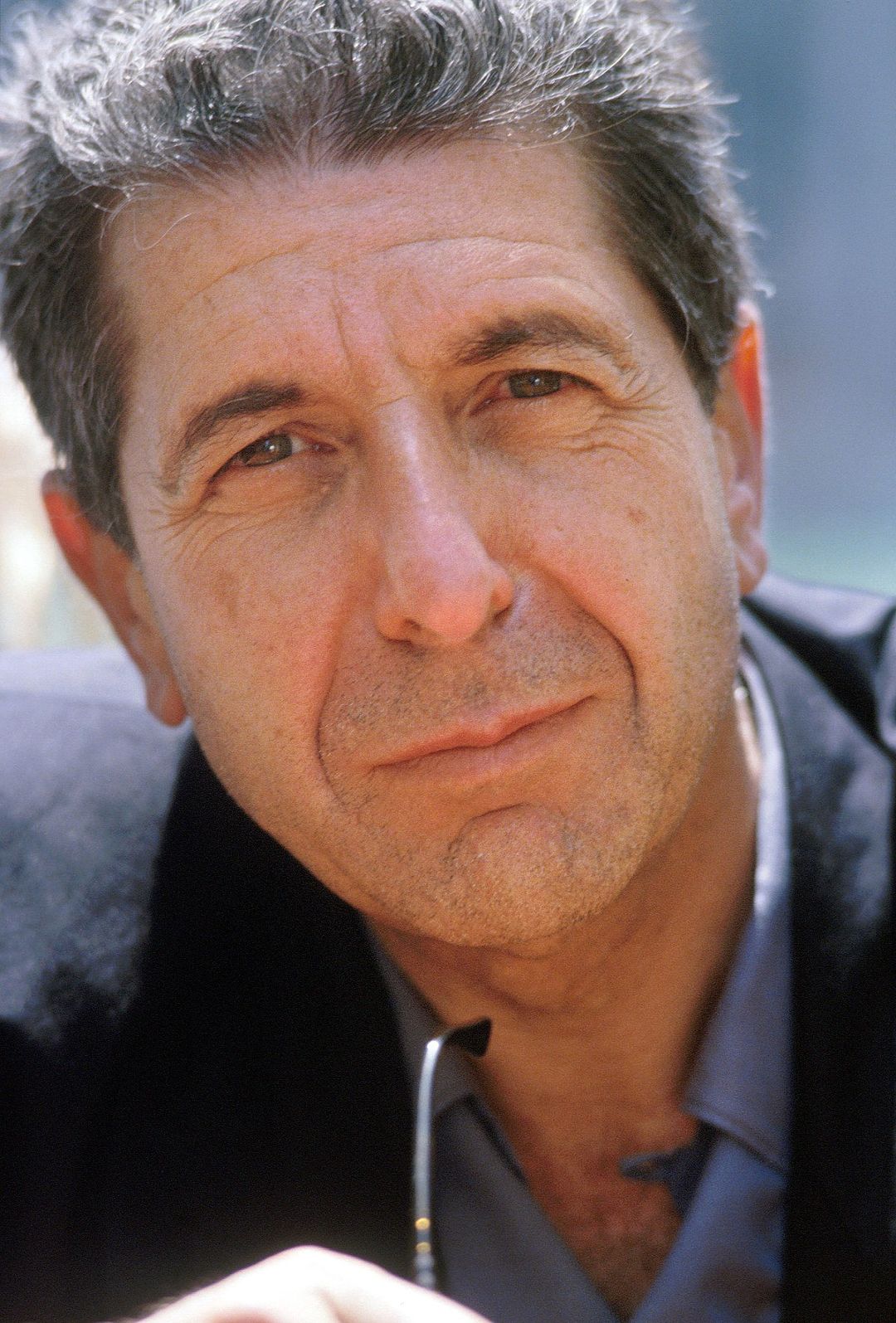 Leonard Cohen has been famously quoted in regards to his formula for songwriting. He has stated that he strives to compose one perfect lyric line a day. Since the average song contains approximately thirty lines, in a month's time, he has composed a perfect song. Leonard Cohen has been famously quoted in regards to his formula for songwriting. He has stated that he strives to compose one perfect lyric line a day. Since the average song contains approximately thirty lines, in a month's time, he has composed a perfect song.
While working with this formula would be excellent training for an aspiring songwriter, the most successful and prolific songwriting team of our generation did not have such a luxury. John Lennon and Paul McCartney were straddled with an extremely busy schedule during their formative years. Looking at 1964 alone, they performed an extensive 18-day marathon concert season in Paris, played throughout London, entered into the whirlwind of American Beatlemania for the first time, filmed their first motion picture, embarked on their first international tour and recorded two full albums as well as singles and an EP.
 In between all of this, while being stuck in hotel rooms and on planes, they wrote 22 original songs. Most of these were written just days before the scheduled recording dates, many of them actually finished in the recording studio while they were recording them. With input from the group's producer George Martin, appropriate final touches on arrangements were suggested and implemented "on the fly." In between all of this, while being stuck in hotel rooms and on planes, they wrote 22 original songs. Most of these were written just days before the scheduled recording dates, many of them actually finished in the recording studio while they were recording them. With input from the group's producer George Martin, appropriate final touches on arrangements were suggested and implemented "on the fly."
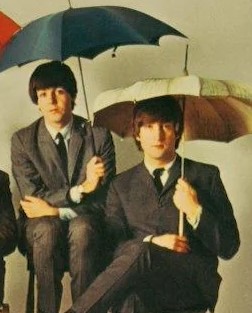 Since there had been a plethora of amazingly successful and admired compositions premiered to the world this year, one has to admit that the Lennon/McCartney songwriting team were something quite special. They had a unique formula of their own, one that flies against all logic when it pertains to studying the proposed recipe for songwriting that we can read about in books. Since there had been a plethora of amazingly successful and admired compositions premiered to the world this year, one has to admit that the Lennon/McCartney songwriting team were something quite special. They had a unique formula of their own, one that flies against all logic when it pertains to studying the proposed recipe for songwriting that we can read about in books.
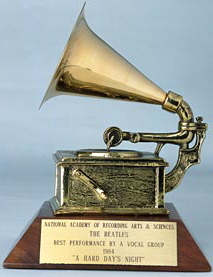 One incredible example of this is the title song they wrote for their first movie "A Hard Day's Night." This made-to-order composition was written very quickly and finished in the studio on very short notice, but went on to become a hugely successful #1 hit all over the world and wound up winning The Beatles a Grammy Award. One incredible example of this is the title song they wrote for their first movie "A Hard Day's Night." This made-to-order composition was written very quickly and finished in the studio on very short notice, but went on to become a hugely successful #1 hit all over the world and wound up winning The Beatles a Grammy Award.
Songwriting History
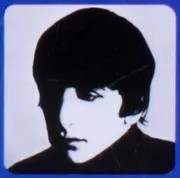 Although the song "A Hard Day's Night" was entirely written in 1964, its origins go back to sometime in 1963. "Ringo would always say grammatically incorrect phrases and we'd all laugh," George Harrison once recalled. Paul explains further by stating, "Ringo would do these little malapropisms; he would say things slightly wrong, like people do, but his were always wonderful, very lyrical, very Lewis Carroll, lovely. They were sort of magic even though he was just getting it wrong." Although the song "A Hard Day's Night" was entirely written in 1964, its origins go back to sometime in 1963. "Ringo would always say grammatically incorrect phrases and we'd all laugh," George Harrison once recalled. Paul explains further by stating, "Ringo would do these little malapropisms; he would say things slightly wrong, like people do, but his were always wonderful, very lyrical, very Lewis Carroll, lovely. They were sort of magic even though he was just getting it wrong."
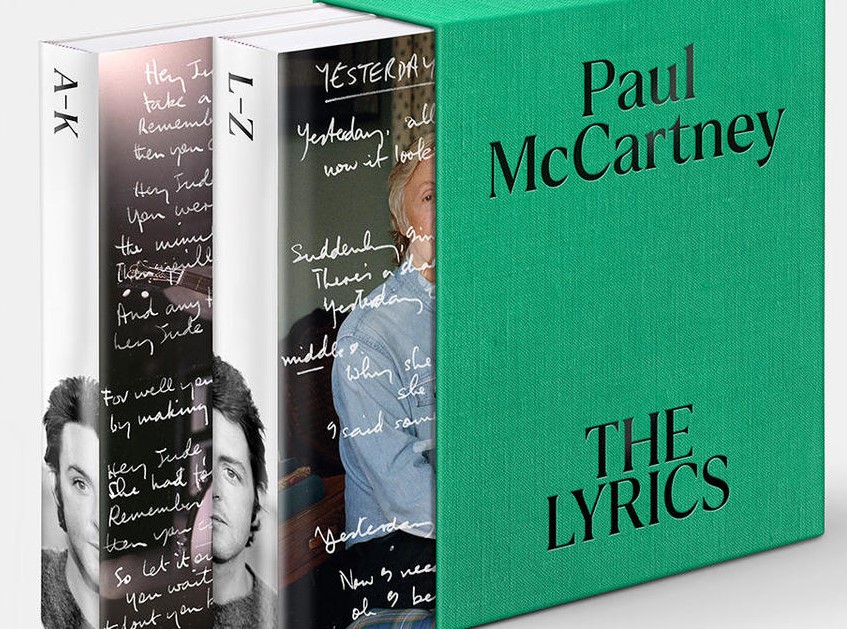 As to a particular malapropism, McCartney added, "(Ringo) said after a concert, 'Phew, it's been a hard day's night.' John and I went, 'What? What did you just say?' He said, 'I'm bloody knackered, man, it's been a hard day's night.'" Ringo later explained, "I seem to be better now. I used to, while I was saying one thing, have another thing come into my brain and move down fast. Once when we were working all day and then into the night, I came out thinking it was still day and said, 'It's been a hard day,' and looked 'round and noticing it was dark, '...'s night!" In his 2021 book "The Lyrics," Paul supposes Ringo's inspiration for the phrase. "Part of what lies behind this song is, of course, Eugene O'Neill's play 'Long Day's Journey Into Night.' It was playing at the time in London. So, we werre kind of aware of that phrase." As to a particular malapropism, McCartney added, "(Ringo) said after a concert, 'Phew, it's been a hard day's night.' John and I went, 'What? What did you just say?' He said, 'I'm bloody knackered, man, it's been a hard day's night.'" Ringo later explained, "I seem to be better now. I used to, while I was saying one thing, have another thing come into my brain and move down fast. Once when we were working all day and then into the night, I came out thinking it was still day and said, 'It's been a hard day,' and looked 'round and noticing it was dark, '...'s night!" In his 2021 book "The Lyrics," Paul supposes Ringo's inspiration for the phrase. "Part of what lies behind this song is, of course, Eugene O'Neill's play 'Long Day's Journey Into Night.' It was playing at the time in London. So, we werre kind of aware of that phrase."
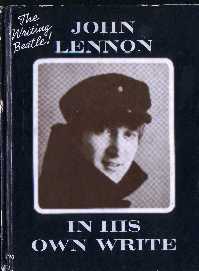 John Lennon liked that phrase so much that he used it in a poem he was writing for his book "In His Own Write." The poem was entitled "Sad Michael," which includes the line, "He'd had a hard day's night that day, for Michael was a Cocky Watchtower." Since the poem was written in late 1963, this dispels the rumor that Ringo came up with the phrase during the shooting of the movie. Lennon himself credits Ringo for the phrase, saying in 1980 "I had used it in 'In His Own Write,' but it was an off-the-cuff remark by Ringo, one of those malapropisms - a Ringoism - said not to be funny, just said." John Lennon liked that phrase so much that he used it in a poem he was writing for his book "In His Own Write." The poem was entitled "Sad Michael," which includes the line, "He'd had a hard day's night that day, for Michael was a Cocky Watchtower." Since the poem was written in late 1963, this dispels the rumor that Ringo came up with the phrase during the shooting of the movie. Lennon himself credits Ringo for the phrase, saying in 1980 "I had used it in 'In His Own Write,' but it was an off-the-cuff remark by Ringo, one of those malapropisms - a Ringoism - said not to be funny, just said."
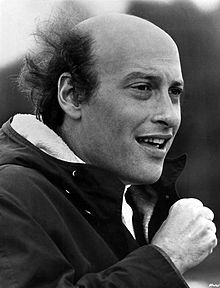 Paul continues the story of how it later became a title for a song. "We'd almost finished making the film and this fun bit arrived that we'd not known about before, which was naming the film. So we were sitting around at Twickenham Studios having a little brain-storming session with director Richard Lester, us, Walter Shenson, Bud Ornstein and some other people sitting around trying to come up with something and we said, 'Well, there was something Ringo said the other day...'." Paul continues the story of how it later became a title for a song. "We'd almost finished making the film and this fun bit arrived that we'd not known about before, which was naming the film. So we were sitting around at Twickenham Studios having a little brain-storming session with director Richard Lester, us, Walter Shenson, Bud Ornstein and some other people sitting around trying to come up with something and we said, 'Well, there was something Ringo said the other day...'."
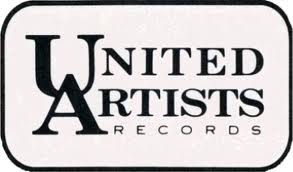 Bud Ornstein was said to have exclaimed, "We just got our title," while Walter Shenson told United Artists, "You're never going to improve on it. It's provocative. It means nothing and has nothing to do with the film. But it sounds like a Beatles title." Lennon continues the story, "I was going home in the car and Dick Lester...said 'We are going to use that title,' and the next morning I brought in the song." In his book "The Lyrics," McCartney adds: "The title is certainly a commentary on the craziness of our lives. I would say it was predominantly John's commentary on things. But we were all knackered, so it was the perect phrase for our state of being." Bud Ornstein was said to have exclaimed, "We just got our title," while Walter Shenson told United Artists, "You're never going to improve on it. It's provocative. It means nothing and has nothing to do with the film. But it sounds like a Beatles title." Lennon continues the story, "I was going home in the car and Dick Lester...said 'We are going to use that title,' and the next morning I brought in the song." In his book "The Lyrics," McCartney adds: "The title is certainly a commentary on the craziness of our lives. I would say it was predominantly John's commentary on things. But we were all knackered, so it was the perect phrase for our state of being."
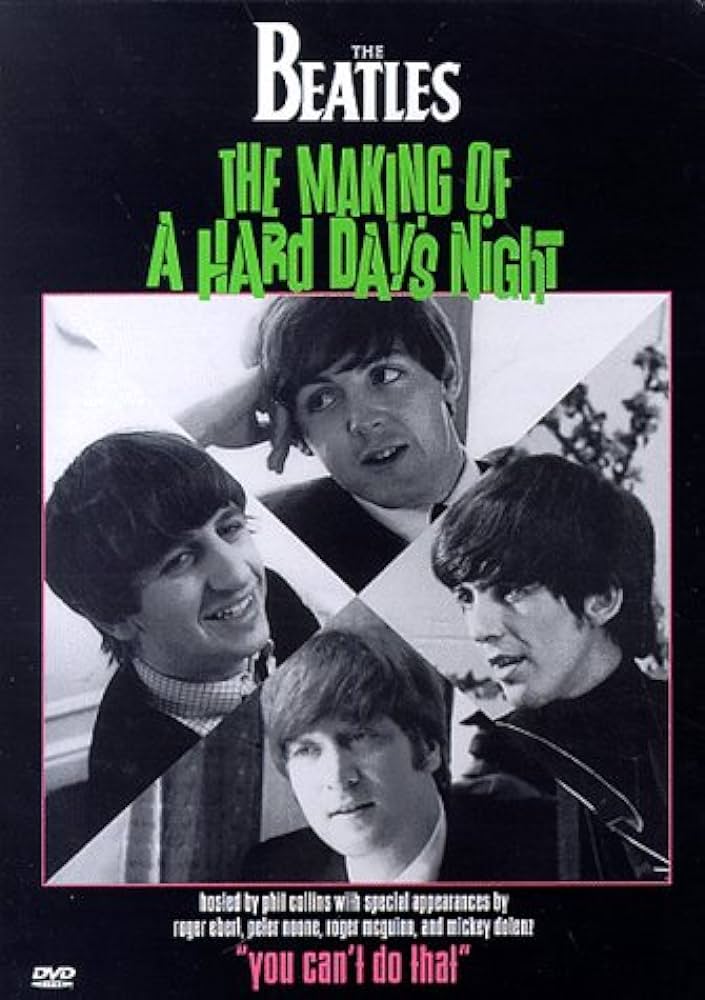 In the 1995 documentary release "You Can't Do That! The Making Of A Hard Day's Night," producer Walter Shenson recalls his role in the writing of the title song. "I mentioned to Lennon one night that we needed to have another song, one titled 'A Hard Day's Night.' His reaction was to ask what I was talking about. I explained by asking what kind of a producer would I be to have a film called 'A Hard Day's Night' starring the Beatles, and then not have a Beatles song called 'A Hard Day's Night.' I asked him to please write this new song. The next morning, he and Paul called me into their dressing room - we were still shooting - and they played and sang to me their new song, 'A Hard Day's Night.' Now, think about this: I got a hit song on demand! That's almost impossible. And it was one of their biggest hits ever." Walter Shenson also recollected on another occasion how John initially inquired what the lyrics should be, to which he replied, "A hard day's night, I come home to you," which made Lennon respond, "That's terrible!" Although Walter Shenson replied, "That's why you're the songwriter and I'm the film producer," John ended up using this idea to formulate the lyrics of the song. In the 1995 documentary release "You Can't Do That! The Making Of A Hard Day's Night," producer Walter Shenson recalls his role in the writing of the title song. "I mentioned to Lennon one night that we needed to have another song, one titled 'A Hard Day's Night.' His reaction was to ask what I was talking about. I explained by asking what kind of a producer would I be to have a film called 'A Hard Day's Night' starring the Beatles, and then not have a Beatles song called 'A Hard Day's Night.' I asked him to please write this new song. The next morning, he and Paul called me into their dressing room - we were still shooting - and they played and sang to me their new song, 'A Hard Day's Night.' Now, think about this: I got a hit song on demand! That's almost impossible. And it was one of their biggest hits ever." Walter Shenson also recollected on another occasion how John initially inquired what the lyrics should be, to which he replied, "A hard day's night, I come home to you," which made Lennon respond, "That's terrible!" Although Walter Shenson replied, "That's why you're the songwriter and I'm the film producer," John ended up using this idea to formulate the lyrics of the song.
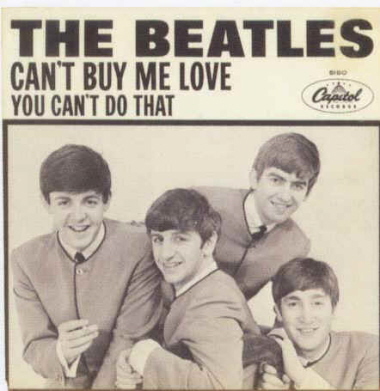 April 13th, 1964, appears to be the day that the decision was made to name the film "A Hard Day's Night." Therefore, that evening, John Lennon took it upon himself to write the title track to the movie himself. Since McCartney had slid in his self-penned song "Can't Buy Me Love" as the current #1 Beatles hit around the world, John asserted himself to make sure he got the next one. He scribbled the lyrics on the back of a matchbox cover and went to sleep. April 13th, 1964, appears to be the day that the decision was made to name the film "A Hard Day's Night." Therefore, that evening, John Lennon took it upon himself to write the title track to the movie himself. Since McCartney had slid in his self-penned song "Can't Buy Me Love" as the current #1 Beatles hit around the world, John asserted himself to make sure he got the next one. He scribbled the lyrics on the back of a matchbox cover and went to sleep.
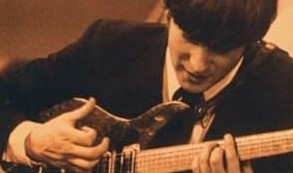 "John said, 'I'll write it,'" Paul continues, "and he did; he came back the next day with it. I think he might not have had all the words. I might have been in on that middle eight. Something like that would only have taken twenty minutes. That would have been plenty of time to run through it." Since McCartney can't quite remember if he really did have a hand in writing the song, it's more than fair to estimate "A Hard Day's Night" as a 90/10 composition in favor of Lennon. "John said, 'I'll write it,'" Paul continues, "and he did; he came back the next day with it. I think he might not have had all the words. I might have been in on that middle eight. Something like that would only have taken twenty minutes. That would have been plenty of time to run through it." Since McCartney can't quite remember if he really did have a hand in writing the song, it's more than fair to estimate "A Hard Day's Night" as a 90/10 composition in favor of Lennon.
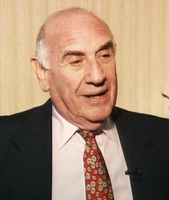 That next day, April 14th, 1964, John propped up the matchbox cover on the dressing-room table as he and Paul premiered the song to Walter Shenson. With his approval, the song was ready for recording. One finishing touch was needed, however, which we'll see below. That next day, April 14th, 1964, John propped up the matchbox cover on the dressing-room table as he and Paul premiered the song to Walter Shenson. With his approval, the song was ready for recording. One finishing touch was needed, however, which we'll see below.
Recording History
 A last minute recording session was scheduled at EMI Studio Two on April 16th, 1964, for The Beatles to record the title track for their nearly completed first movie. Three hours was all that the group needed, from 10 am to 1 pm. Present on this day, other than producer George Martin, the band, and engineers Norman Smith and Geoff Emerick, was journalist and friend Maureen Cleave as well as the film's director Dick Lester. A last minute recording session was scheduled at EMI Studio Two on April 16th, 1964, for The Beatles to record the title track for their nearly completed first movie. Three hours was all that the group needed, from 10 am to 1 pm. Present on this day, other than producer George Martin, the band, and engineers Norman Smith and Geoff Emerick, was journalist and friend Maureen Cleave as well as the film's director Dick Lester.
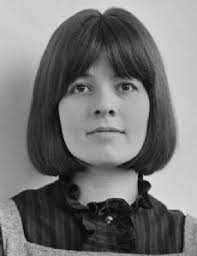 Maureen Cleave remembers helping them put the finishing touch on the lyrics in the studio on this day. John apparently re-wrote the lyrics on the back of a birthday card meant for his son Julian, which contained the original line "But when I get home to you, I find my tiredness is through, and I feel alright." Maureen Cleave told him that she thought "my tiredness is through" was a weak line, so Lennon immediately took out a pen, crossed out the line, and came up with "I find the things that you do will make me feel alright." Maureen Cleave remembers helping them put the finishing touch on the lyrics in the studio on this day. John apparently re-wrote the lyrics on the back of a birthday card meant for his son Julian, which contained the original line "But when I get home to you, I find my tiredness is through, and I feel alright." Maureen Cleave told him that she thought "my tiredness is through" was a weak line, so Lennon immediately took out a pen, crossed out the line, and came up with "I find the things that you do will make me feel alright."
 Maureen Cleave also emphasizes how new the song was for the band when they entered the studio. "The song seemed to materialize as if by magic," she recalls. "It consisted of John humming to the others, then they would all put their heads together and hum and three hours later they had this record." Other evidence of how unrehearsed they were on this day can be heard by examining take one, which is included on the "Anthology 1" album. McCartney's bass guitar flubs are evidence of his not being sure of the chord changes, as well as his concluding the vocal line on the bridge with the phrase "all through the night, oowh" instead of "tight, tight, yeah" as we're used to hearing. Harrison also performs a very crude guitar solo, which he apparently hadn't had time to work out yet. Maureen Cleave also emphasizes how new the song was for the band when they entered the studio. "The song seemed to materialize as if by magic," she recalls. "It consisted of John humming to the others, then they would all put their heads together and hum and three hours later they had this record." Other evidence of how unrehearsed they were on this day can be heard by examining take one, which is included on the "Anthology 1" album. McCartney's bass guitar flubs are evidence of his not being sure of the chord changes, as well as his concluding the vocal line on the bridge with the phrase "all through the night, oowh" instead of "tight, tight, yeah" as we're used to hearing. Harrison also performs a very crude guitar solo, which he apparently hadn't had time to work out yet.
 Director Richard Lester's current presence in the studio, on the other hand, was not strictly for observation purposes. "Usually, the only people in the control room while the band played in the studio down below were George Martin, Norman Smith, and whoever was assigned to be the assistant engineer," explained Geoff Emerick, who was the assistant engineer on that day. "On this morning, however, we were joined by the film's director, Dick Lester, and his presence was definitely not appreciated." Director Richard Lester's current presence in the studio, on the other hand, was not strictly for observation purposes. "Usually, the only people in the control room while the band played in the studio down below were George Martin, Norman Smith, and whoever was assigned to be the assistant engineer," explained Geoff Emerick, who was the assistant engineer on that day. "On this morning, however, we were joined by the film's director, Dick Lester, and his presence was definitely not appreciated."
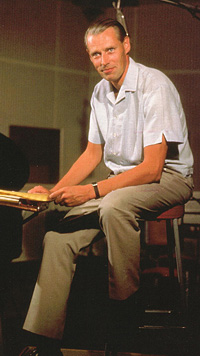 Richard Lester had a definite agenda that day. "Dick kept insisting that something 'blockbuster' was needed for the opening of the film," Geoff Emerick continues, "hence John and George's crashing guitar chord that heralds the first notes of the song. But that wasn't enough for Richard Lester, who kept making one odd suggestion after another. 'Tell them I need it more cinematic,' he shouted to George Martin at one point." Richard Lester had a definite agenda that day. "Dick kept insisting that something 'blockbuster' was needed for the opening of the film," Geoff Emerick continues, "hence John and George's crashing guitar chord that heralds the first notes of the song. But that wasn't enough for Richard Lester, who kept making one odd suggestion after another. 'Tell them I need it more cinematic,' he shouted to George Martin at one point."
George Martin concurs, stating: "We knew it would open both the film and the soundtrack album, so we wanted a particularly strong and effective beginning. The strident guitar chord was the perfect launch." George Martin was quoted on another occasion saying: "In those days, the beginnings and endings of songs were things I tended to organize. We needed something striking, to be a sudden jerk into the song. It was by chance that (John Lennon) struck the right one. We knew it when we heard it."
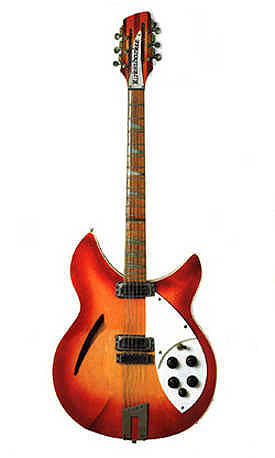 Although just what this unique introductory chord consists of has been the subject of much debate, it appears to have been George playing a hybrid F chord on his twelve-string Rickenbacker with unique fingering as follows: 1st set of strings = G on the 3rd fret (pinky), 2nd set of strings = C on the 1st fret (index finger), 3rd set of strings = A on the 2nd fret (middle finger), 4th set of strings = F on the 3rd fret (ring finger), 5th set of strings = C on the 3rd fret (thumb), and 6th set of strings = G on the 3rd fret (thumb also). Paul then plays a low D on his bass while John plays an Fadd9 chord on his six-string acoustic Gibson guitar as an overdub. Also evident on the master tape is a piano, presumably played by George Martin, playing low D and G notes, probably also recorded as an overdub. Although just what this unique introductory chord consists of has been the subject of much debate, it appears to have been George playing a hybrid F chord on his twelve-string Rickenbacker with unique fingering as follows: 1st set of strings = G on the 3rd fret (pinky), 2nd set of strings = C on the 1st fret (index finger), 3rd set of strings = A on the 2nd fret (middle finger), 4th set of strings = F on the 3rd fret (ring finger), 5th set of strings = C on the 3rd fret (thumb), and 6th set of strings = G on the 3rd fret (thumb also). Paul then plays a low D on his bass while John plays an Fadd9 chord on his six-string acoustic Gibson guitar as an overdub. Also evident on the master tape is a piano, presumably played by George Martin, playing low D and G notes, probably also recorded as an overdub.
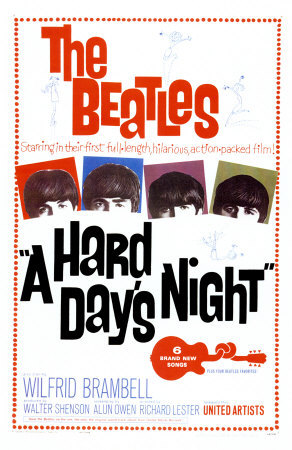 Another suggestion by Richard Lester was the conclusion of the song. "Lester kept insisting that he needed a 'dreamy' fadeout in order to segue into the movie's first scene," remembers Geoff Emerick. Both of Richard Lester's suggestions had to have been made prior to the first attempt at recording the song, since both of these elements (the intro and conclusion) were attempted on the first take. Another suggestion by Richard Lester was the conclusion of the song. "Lester kept insisting that he needed a 'dreamy' fadeout in order to segue into the movie's first scene," remembers Geoff Emerick. Both of Richard Lester's suggestions had to have been made prior to the first attempt at recording the song, since both of these elements (the intro and conclusion) were attempted on the first take.
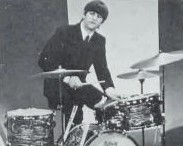 As for the actual performance of the group, they were in very good form at this session. "I hadn't been on a session with The Beatles for some six months," Geoff Emerick states, "and I was impressed by how much more professional they had gotten in that relatively short span. Not only was their playing tighter, but they were acting very much like seasoned veterans in the studio, knowing exactly what they were trying to accomplish and getting it done with a minimum of fuss, very much like a well-oiled machine." As for the actual performance of the group, they were in very good form at this session. "I hadn't been on a session with The Beatles for some six months," Geoff Emerick states, "and I was impressed by how much more professional they had gotten in that relatively short span. Not only was their playing tighter, but they were acting very much like seasoned veterans in the studio, knowing exactly what they were trying to accomplish and getting it done with a minimum of fuss, very much like a well-oiled machine."
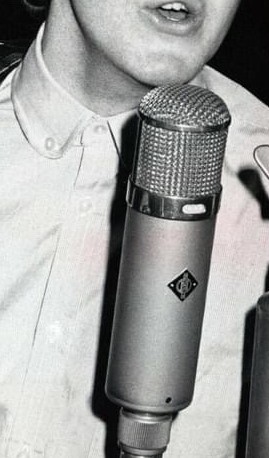 This "well-oiled machine" did do its share of sputtering on this day however. Even through to takes six and seven, McCartney still hadn't gotten his bass part down yet, nor had he worked out the bridge vocals or lyrics properly. Since Harrison was having such a hard time with the guitar solo, he stopped performing it altogether with the intention of overdubbing it at a later date. Nonetheless, all four Beatles played their usual instruments and sang simultaneously. The practice of putting down a rhythm track without vocals did not become standard practice until the following year. This "well-oiled machine" did do its share of sputtering on this day however. Even through to takes six and seven, McCartney still hadn't gotten his bass part down yet, nor had he worked out the bridge vocals or lyrics properly. Since Harrison was having such a hard time with the guitar solo, he stopped performing it altogether with the intention of overdubbing it at a later date. Nonetheless, all four Beatles played their usual instruments and sang simultaneously. The practice of putting down a rhythm track without vocals did not become standard practice until the following year.
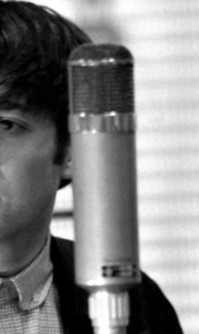 With Lennon and McCartney "brimming with confidence" and Ringo "attacking his drums with a ferocity I hadn't seen or heard before," according to Geoff Emerick, "take nine" was the keeper. Lennon announced that he was satisfied and George Martin agreed. When Richard Lester called for another take, "George Martin was smart enough to keep him well away from the talkback microphone and pretended not to hear his dissent," Geoff Emerick remembers. With Lennon and McCartney "brimming with confidence" and Ringo "attacking his drums with a ferocity I hadn't seen or heard before," according to Geoff Emerick, "take nine" was the keeper. Lennon announced that he was satisfied and George Martin agreed. When Richard Lester called for another take, "George Martin was smart enough to keep him well away from the talkback microphone and pretended not to hear his dissent," Geoff Emerick remembers.
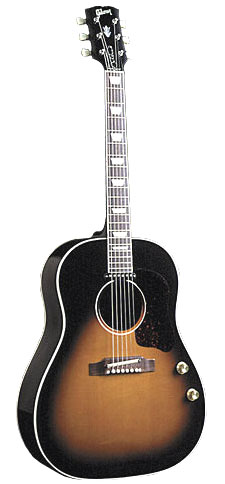 Track one of the four-track tape contained the original rhythm track while track two contained John and Paul's lead vocals. It was now time for overdubs. Track three comprised one elaborate overdub consisting of John double-tracking his lead vocals while playing an acoustic guitar (including the introductory chord), Paul double-tracking his vocal part and Ringo playing bongos during the verses and a cowbell during the bridges. Track one of the four-track tape contained the original rhythm track while track two contained John and Paul's lead vocals. It was now time for overdubs. Track three comprised one elaborate overdub consisting of John double-tracking his lead vocals while playing an acoustic guitar (including the introductory chord), Paul double-tracking his vocal part and Ringo playing bongos during the verses and a cowbell during the bridges.
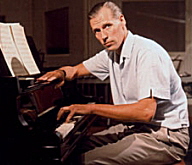 The song's last overdub sessions pertained to George Harrison's contributions to the song, which were overdubbed onto track four of the master tape. First to be tackled was his guitar solo. Geoff Emerick explains: "After some discussion about having Paul play the part instead...George Martin finally decided to instead employ the same 'wound-up piano' technique he had done the year previous on the song 'Misery.' I was told to roll the tape at half speed while George went down into the studio and doubled the guitar solo on an out-of-tune upright piano. Both parts had to be played simultaneously because there was only one free track, and it was fascinating watching the two Georges...working side by side in the studio...as they played the rhythmically complex solo in tight unison on their respective instruments." George Martin undoubtedly recorded his piano contribution to the introductory chord at this time as well. The song's last overdub sessions pertained to George Harrison's contributions to the song, which were overdubbed onto track four of the master tape. First to be tackled was his guitar solo. Geoff Emerick explains: "After some discussion about having Paul play the part instead...George Martin finally decided to instead employ the same 'wound-up piano' technique he had done the year previous on the song 'Misery.' I was told to roll the tape at half speed while George went down into the studio and doubled the guitar solo on an out-of-tune upright piano. Both parts had to be played simultaneously because there was only one free track, and it was fascinating watching the two Georges...working side by side in the studio...as they played the rhythmically complex solo in tight unison on their respective instruments." George Martin undoubtedly recorded his piano contribution to the introductory chord at this time as well.
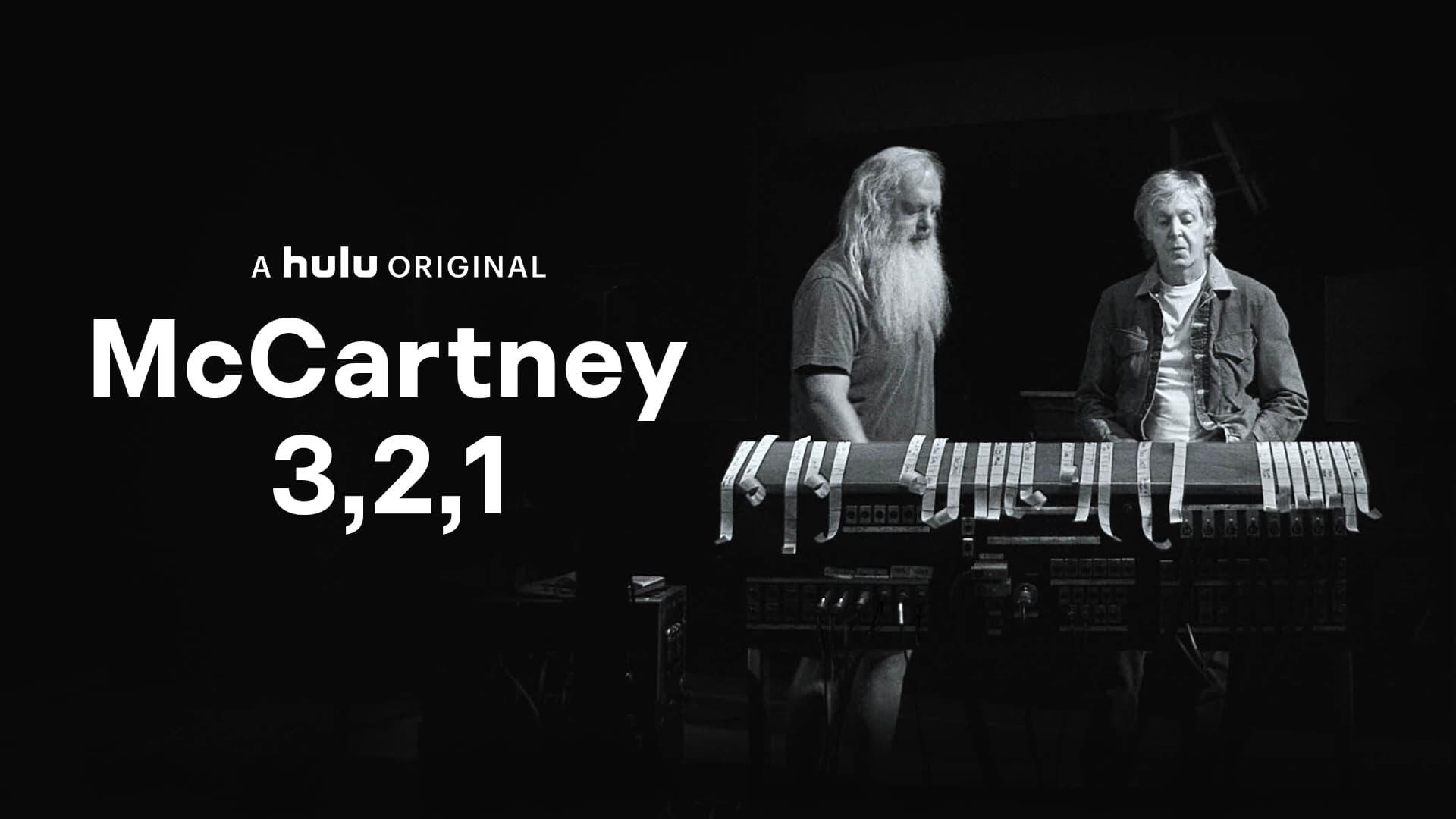 In regards to the "wound up" technique detailed above for the guitar solo, Paul explains it accurately in his 2021 Hulu docu-series "McCartney 3,2,1." "The great thing about four-track machines is," Paul explains, "if you take it down, you take it down by an octave. (The Beatles) could always play it an octave lower. That was always a great experiment thing, just with one flick of the wrist. So we used that quite a lot, that feature. On 'A Hard Day's Night,' there's a great guitar solo, half speed, sped up. It's up the octave...you can't hear the effect...(to) get it really accurate. And also, these were the great fun experiments. If George is having trouble, 'ok, wait a minute, let's think!' So George Martin probably said, 'We'll give you...if we took it half speed.' So you can hear that and then it comes back up, and it's got a ringy - it's got a slightly synthetic sound to it. We loved all of that. It was like being professors in a laboratory. We were just discovering all these little things. In regards to the "wound up" technique detailed above for the guitar solo, Paul explains it accurately in his 2021 Hulu docu-series "McCartney 3,2,1." "The great thing about four-track machines is," Paul explains, "if you take it down, you take it down by an octave. (The Beatles) could always play it an octave lower. That was always a great experiment thing, just with one flick of the wrist. So we used that quite a lot, that feature. On 'A Hard Day's Night,' there's a great guitar solo, half speed, sped up. It's up the octave...you can't hear the effect...(to) get it really accurate. And also, these were the great fun experiments. If George is having trouble, 'ok, wait a minute, let's think!' So George Martin probably said, 'We'll give you...if we took it half speed.' So you can hear that and then it comes back up, and it's got a ringy - it's got a slightly synthetic sound to it. We loved all of that. It was like being professors in a laboratory. We were just discovering all these little things.
 After this was done, George Harrison then went over the "dreamy" fadeout that Dick Lester suggested. Since he was having a bit of trouble performing this riff during the actual takes, the overdub was performed by slightly slowing down the tape. This then completed the song. After this was done, George Harrison then went over the "dreamy" fadeout that Dick Lester suggested. Since he was having a bit of trouble performing this riff during the actual takes, the overdub was performed by slightly slowing down the tape. This then completed the song.
The first mixing session for the song was on April 20th, 1964 with only George Martin and engineers Norman Smith and A.B. Lincoln present. Mono and stereo mixes were completed on this day, intended exclusively for United Artists to release on their soundtrack album.
April 23rd, 1964 saw another mono mix of the song made which was intended for the record release only, not the movie. Only George Martin, Norman Smith and engineer David Lloyd were present on this day.
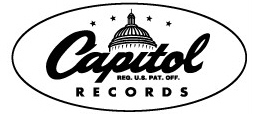 On June 9th, 1964, more mixing work was done for the song, first for mono tape copying so that two identical tapes of the best mono mixes could be distributed to both United Artists and Capitol Records in America for release in that country. Also made on this day was an extended mono mix to be used for the film. An edit was performed to extend the ending, and this was sent to United Artists for use in the movie only, not the soundtrack album. On June 9th, 1964, more mixing work was done for the song, first for mono tape copying so that two identical tapes of the best mono mixes could be distributed to both United Artists and Capitol Records in America for release in that country. Also made on this day was an extended mono mix to be used for the film. An edit was performed to extend the ending, and this was sent to United Artists for use in the movie only, not the soundtrack album.
A further stereo mix was needed for release on the British "A Hard Day's Night" album, so this was done with the rest of the tracks on June 22nd, 1964. This session was attended by George Martin, Norman Smith and Geoff Emerick only.
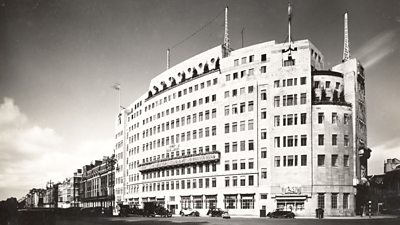 On July 14th, 1964, they recorded a version of "A Hard Day's Night" for BBC radio in Studios B7/S2 of Broadcasting House in London, this recording session produced by Bernie Andrews between 7 and 11 pm. This recording aired on July 16th, 1964 on the new BBC radio show entitled "Top Gear" between 10 and 11:55 pm. A noticeable edit is heard during the solo section of the song, which was necessary to include the complicated solo section of the song that was edited in from the record. On July 14th, 1964, they recorded a version of "A Hard Day's Night" for BBC radio in Studios B7/S2 of Broadcasting House in London, this recording session produced by Bernie Andrews between 7 and 11 pm. This recording aired on July 16th, 1964 on the new BBC radio show entitled "Top Gear" between 10 and 11:55 pm. A noticeable edit is heard during the solo section of the song, which was necessary to include the complicated solo section of the song that was edited in from the record.
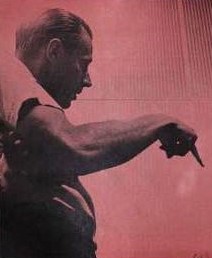 George Martin apparently was scheduled to show up in BBC studios on that day to contribute his piano part but didn't show up. In order to hide the truth, The Beatles do a fade-out at the conclusion of the recording while talking with host Brian Matthew in order to convince the listening audience that they were doing this live, not just playing the record. A second BBC recording of the song was made on July 17th, 1964 at BBC Paris Studio in London between 2:15 and 6:15 pm for the fourth edition of their series "From Us To You," which was produced by Brian Marriott and broadcast on August 3rd between 10 am and 12 noon. George Martin apparently was scheduled to show up in BBC studios on that day to contribute his piano part but didn't show up. In order to hide the truth, The Beatles do a fade-out at the conclusion of the recording while talking with host Brian Matthew in order to convince the listening audience that they were doing this live, not just playing the record. A second BBC recording of the song was made on July 17th, 1964 at BBC Paris Studio in London between 2:15 and 6:15 pm for the fourth edition of their series "From Us To You," which was produced by Brian Marriott and broadcast on August 3rd between 10 am and 12 noon.
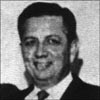 Three more recording sessions were done for the song "A Hard Day's Night," all these being live performances at the Hollywood Bowl in Los Angeles, California. The Beatles performed there three times, on August 23rd, 1964, and on August 29th and 30th, 1965, all of these being recorded on a three-track recording deck for possible inclusion on proposed live albums for those years. The 1964 show was produced by Capitol Records vice-president Voyle Gilmore and George Martin and engineered by Hugh Davies, this recording being shelved because of "the technical quality of the tapes," as the press stated at the time. Three more recording sessions were done for the song "A Hard Day's Night," all these being live performances at the Hollywood Bowl in Los Angeles, California. The Beatles performed there three times, on August 23rd, 1964, and on August 29th and 30th, 1965, all of these being recorded on a three-track recording deck for possible inclusion on proposed live albums for those years. The 1964 show was produced by Capitol Records vice-president Voyle Gilmore and George Martin and engineered by Hugh Davies, this recording being shelved because of "the technical quality of the tapes," as the press stated at the time.
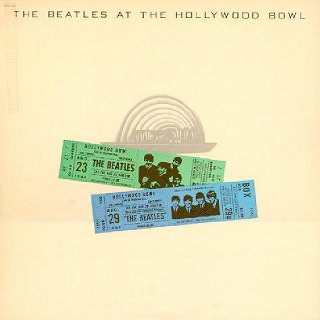 Their August 29th, 1965 performance was produced by Karl Engemann and engineered by Hugh Davies, but was also deemed unsuitable because of Paul's amplifier malfunctioning. The August 30th, 1965 recording was much better, this being produced by Voyle Gilmore and engineered by Pete Abbott. On January 18th, 1977, George Martin and engineer Geoff Emerick were given all of the Hollywood Bowl master tapes to finally prepare "The Beatles At Hollywood Bowl," their work on "A Hard Day's Night" and the rest of the 13 songs being complete on January 23rd of that year. Their August 29th, 1965 performance was produced by Karl Engemann and engineered by Hugh Davies, but was also deemed unsuitable because of Paul's amplifier malfunctioning. The August 30th, 1965 recording was much better, this being produced by Voyle Gilmore and engineered by Pete Abbott. On January 18th, 1977, George Martin and engineer Geoff Emerick were given all of the Hollywood Bowl master tapes to finally prepare "The Beatles At Hollywood Bowl," their work on "A Hard Day's Night" and the rest of the 13 songs being complete on January 23rd of that year.
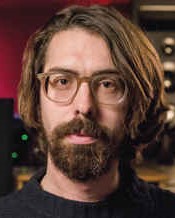 Giles Martin (son of George Martin) revisited the original session tapes of the song "A Hard Day's Night" with engineer Sam Okell in Abbey Road Studios sometime in 2015 to create a new stereo mix, the result appearing on a new edition of their compilation album "Beatles 1." Giles Martin (son of George Martin) revisited the original session tapes of the song "A Hard Day's Night" with engineer Sam Okell in Abbey Road Studios sometime in 2015 to create a new stereo mix, the result appearing on a new edition of their compilation album "Beatles 1."
 Then again in 2023, Giles Martin was given the task of creating a "demix remix" of the song "A Hard Day's Night" for inclusion on the 50th Anniversary edition of the compilation album "The Beatles / 1962 - 1966" (aka "The Red Album"). With Peter Jackson's brand new AI technology at his disposal, Giles Martin was now able to utilize this "machine-learning techology" for "individual elements that were put to tape...and were therefore impossible to separate" to be "untangled, allowing Giles (Martin) to put the original recordings back together with even greater clarity and impact," as stated by John Harris in the liner notes of the above mentioned album. The vibrancy and clarity of the opening chord alone makes this the best stereo mix yet, let alone Ringo's noticeable but well placed bongo performance in the right channel with mostly centered vocals by John and Paul. Then again in 2023, Giles Martin was given the task of creating a "demix remix" of the song "A Hard Day's Night" for inclusion on the 50th Anniversary edition of the compilation album "The Beatles / 1962 - 1966" (aka "The Red Album"). With Peter Jackson's brand new AI technology at his disposal, Giles Martin was now able to utilize this "machine-learning techology" for "individual elements that were put to tape...and were therefore impossible to separate" to be "untangled, allowing Giles (Martin) to put the original recordings back together with even greater clarity and impact," as stated by John Harris in the liner notes of the above mentioned album. The vibrancy and clarity of the opening chord alone makes this the best stereo mix yet, let alone Ringo's noticeable but well placed bongo performance in the right channel with mostly centered vocals by John and Paul.
Song Structure and Style
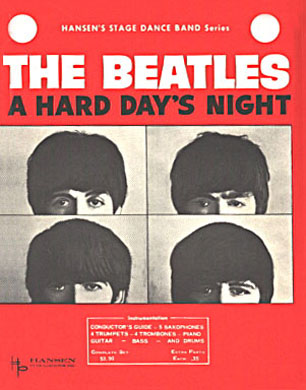 "A Hard Day's Night" follows the common structure that the Lennon / McCartney songwriting team had been using thus far, this being the verse/ verse/ bridge/ verse formula (or aaba). With the addition of a quick introduction, a solo section, a repeat of the bridge, a lengthened final verse and a faded conclusion, we have a pattern that has been used many times before, but to good effect. "A Hard Day's Night" follows the common structure that the Lennon / McCartney songwriting team had been using thus far, this being the verse/ verse/ bridge/ verse formula (or aaba). With the addition of a quick introduction, a solo section, a repeat of the bridge, a lengthened final verse and a faded conclusion, we have a pattern that has been used many times before, but to good effect.
A noteworthy point to mention is the bluesy melody line and chord pattern that is used on this track. This influence was creeping into their original songs more frequently at this point, as can be heard on both sides of their last single, namely "Can't Buy Me Love" and "You Can't Do That," as well as many of the tracks on their upcoming album, such as "When I Get Home" and "I'll Cry Instead." Not to say that this was new in their arsenal, as traces of a "blues" influence can be heard as early as "One After 909."
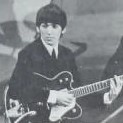 The much talked about introduction, the sudden crisp and vibrant opening chord, was described by George Harrison as an "F with a G on top." It is actually a G eleventh suspended fourth. It has also been described as a superimposition of the chords D minor, F major and D major. Either way, it has a "wake me from the dead" surprising urgency that demands attention, which works perfectly in its intended purpose as the introduction to their first film. (See detailed information about this chord in the "Recording History" section above.) The much talked about introduction, the sudden crisp and vibrant opening chord, was described by George Harrison as an "F with a G on top." It is actually a G eleventh suspended fourth. It has also been described as a superimposition of the chords D minor, F major and D major. Either way, it has a "wake me from the dead" surprising urgency that demands attention, which works perfectly in its intended purpose as the introduction to their first film. (See detailed information about this chord in the "Recording History" section above.)
 Upon close listening, you'll notice that the introduction, the guitar chord, is exactly two measures long. At the beginning of take seven, Lennon informs the rest of the group that he would "tap toe" the beat after he played the opening chord with George so that everyone would know exactly when to come in. Upon close listening, you'll notice that the introduction, the guitar chord, is exactly two measures long. At the beginning of take seven, Lennon informs the rest of the group that he would "tap toe" the beat after he played the opening chord with George so that everyone would know exactly when to come in.
After the intro, we jump headlong into the twelve measure first verse, which is sung primarily by John alone except for the ninth and tenth measures. These two measures feature Paul singing a high harmony to the clever rising and falling melody line. A second verse is then heard, which is identical except for different lyrics.
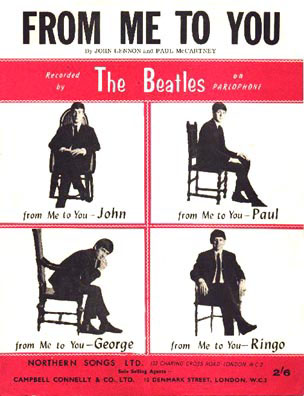 The major/minor chord structure of the song now appears as we enter the eight measure bridge. Paul takes over the vocals (sung only because John couldn't reach the higher register) as the chords shift in a similar manner to the bridge on "From Me To You." The major/minor chord structure of the song now appears as we enter the eight measure bridge. Paul takes over the vocals (sung only because John couldn't reach the higher register) as the chords shift in a similar manner to the bridge on "From Me To You."
We are now treated to hearing the first verse again. "We would often repeat the first verse," Paul remembers. "The last verse was no problem - 'Two hours is up! Come on, just put "Repeat 1".' That was how a lot of our songs end, 'Repeat 1'...which was good if it was hooky, it meant that you've heard those lyrics twice, so we'd rammed 'em home, and it saved us having to think of a third verse." Being that the song was written quickly and under pressure, repeating the first verse was economical as well as effective. Because of the extended pattern used in this song, that first verse is actually heard three times in the song, which 'rams home' the title of the song for all to remember.
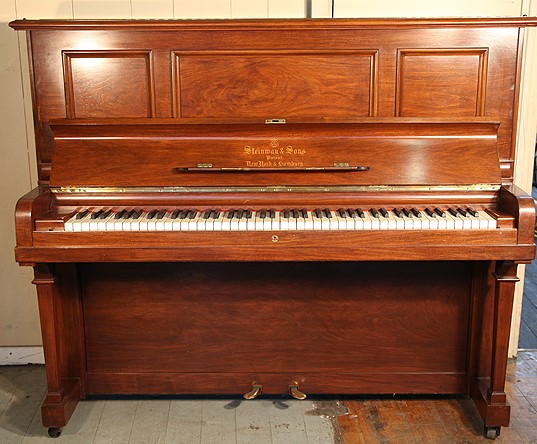 We now enter into the solo section of the song, this being played within the twelve measure verse chord structure. George Harrison's precise Rickenbacker 12-string guitar flourishes, along with George Martin's piano mimicking, repeat themselves twice during the first eight measures of this section, while the final four measures show a return of the very pleasurable Lennon / McCartney harmonies we all enjoyed hearing in the second verse. We now enter into the solo section of the song, this being played within the twelve measure verse chord structure. George Harrison's precise Rickenbacker 12-string guitar flourishes, along with George Martin's piano mimicking, repeat themselves twice during the first eight measures of this section, while the final four measures show a return of the very pleasurable Lennon / McCartney harmonies we all enjoyed hearing in the second verse.
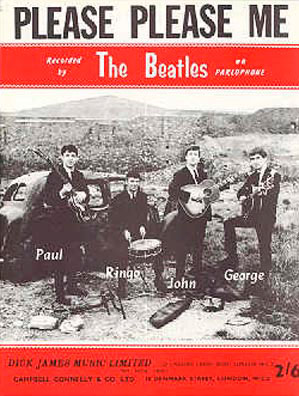 After a carbon copy of the bridge is heard, the first verse is repeated for the third time, but this time it is extended three more measures in order to emphasize the final lyric line of the song three times. This practice has also been heard before in The Beatles cannon, such as on "Please Please Me." After a carbon copy of the bridge is heard, the first verse is repeated for the third time, but this time it is extended three more measures in order to emphasize the final lyric line of the song three times. This practice has also been heard before in The Beatles cannon, such as on "Please Please Me."
We then hear something that is quite uncommon thus far for The Beatles, although it became very common shortly thereafter, this being a "fade-out" ending. The conclusion, which was tagged on at director Dick Lester's insistence, comprised a jangling guitar riff played by Harrison on his above mentioned Rickenbacker 12-string. The riff comprises notes from the strident chord heard at the beginning of the song, played in a less commanding but suspenseful fashion. An impressive final touch to a song that demands attention.
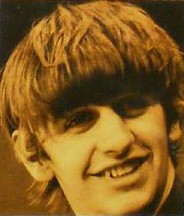 Writing a song made-to-order from a 'Ringoism' phrase for the title may have been difficult, especially in regard to not wanting the lyrics to sound forced. "Usually, John and I would sit down and if we thought of something we'd write a song about it," Paul remembers. "It seemed a bit ridiculous writing a song called 'A Hard Day's Night.' It sounded funny at the time, but after a bit we got the idea of saying it had been a hard day's night and we'd been working all the days, and get back to a girl and everything's fine." Writing a song made-to-order from a 'Ringoism' phrase for the title may have been difficult, especially in regard to not wanting the lyrics to sound forced. "Usually, John and I would sit down and if we thought of something we'd write a song about it," Paul remembers. "It seemed a bit ridiculous writing a song called 'A Hard Day's Night.' It sounded funny at the time, but after a bit we got the idea of saying it had been a hard day's night and we'd been working all the days, and get back to a girl and everything's fine."
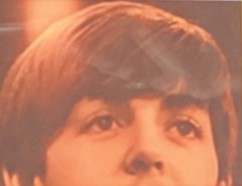 You can't help but notice the not-so-subtle sexual references among the lyrics, one of which is the "things" that the girl will do that makes the singer "feel alright." The second verse goes there again, referring to how working hard for his girl is "worth it" when she tells him she's 'gonna give him everything' when he 'gets her alone.' So did the singer have more in mind than "feeling you holding me tight," as the bridge states? "I don't think we were trying to be particularly suggestive with the lyrics," Paul relates in his book "The Lyrics." "I think we were just young guys." You can't help but notice the not-so-subtle sexual references among the lyrics, one of which is the "things" that the girl will do that makes the singer "feel alright." The second verse goes there again, referring to how working hard for his girl is "worth it" when she tells him she's 'gonna give him everything' when he 'gets her alone.' So did the singer have more in mind than "feeling you holding me tight," as the bridge states? "I don't think we were trying to be particularly suggestive with the lyrics," Paul relates in his book "The Lyrics." "I think we were just young guys."
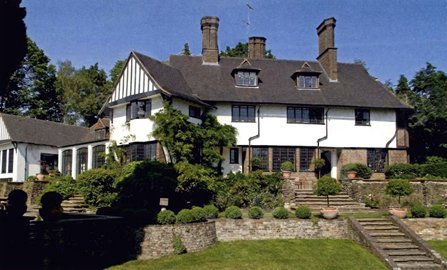 The lyrics also suggest that Lennon was relating something about his personal life in 1964. After all, if you examine Mark Lewisohn's book "The Complete Beatles Chronicle," the reader can easily see that the group's day to day life was indeed a hectic and never-ending 'hard day's night.' The Beatles truly were 'working like dogs' and being sleep deprived. It probably wasn't a fictional thought that he couldn't wait to get home to his wife Cynthia. And since his hard work with The Beatles was financing the Kenwood twenty-seven room mansion that he would buy three months later, Lennon's lyrics about working "all day...to buy you things" definitely rings true. The lyrics also suggest that Lennon was relating something about his personal life in 1964. After all, if you examine Mark Lewisohn's book "The Complete Beatles Chronicle," the reader can easily see that the group's day to day life was indeed a hectic and never-ending 'hard day's night.' The Beatles truly were 'working like dogs' and being sleep deprived. It probably wasn't a fictional thought that he couldn't wait to get home to his wife Cynthia. And since his hard work with The Beatles was financing the Kenwood twenty-seven room mansion that he would buy three months later, Lennon's lyrics about working "all day...to buy you things" definitely rings true.
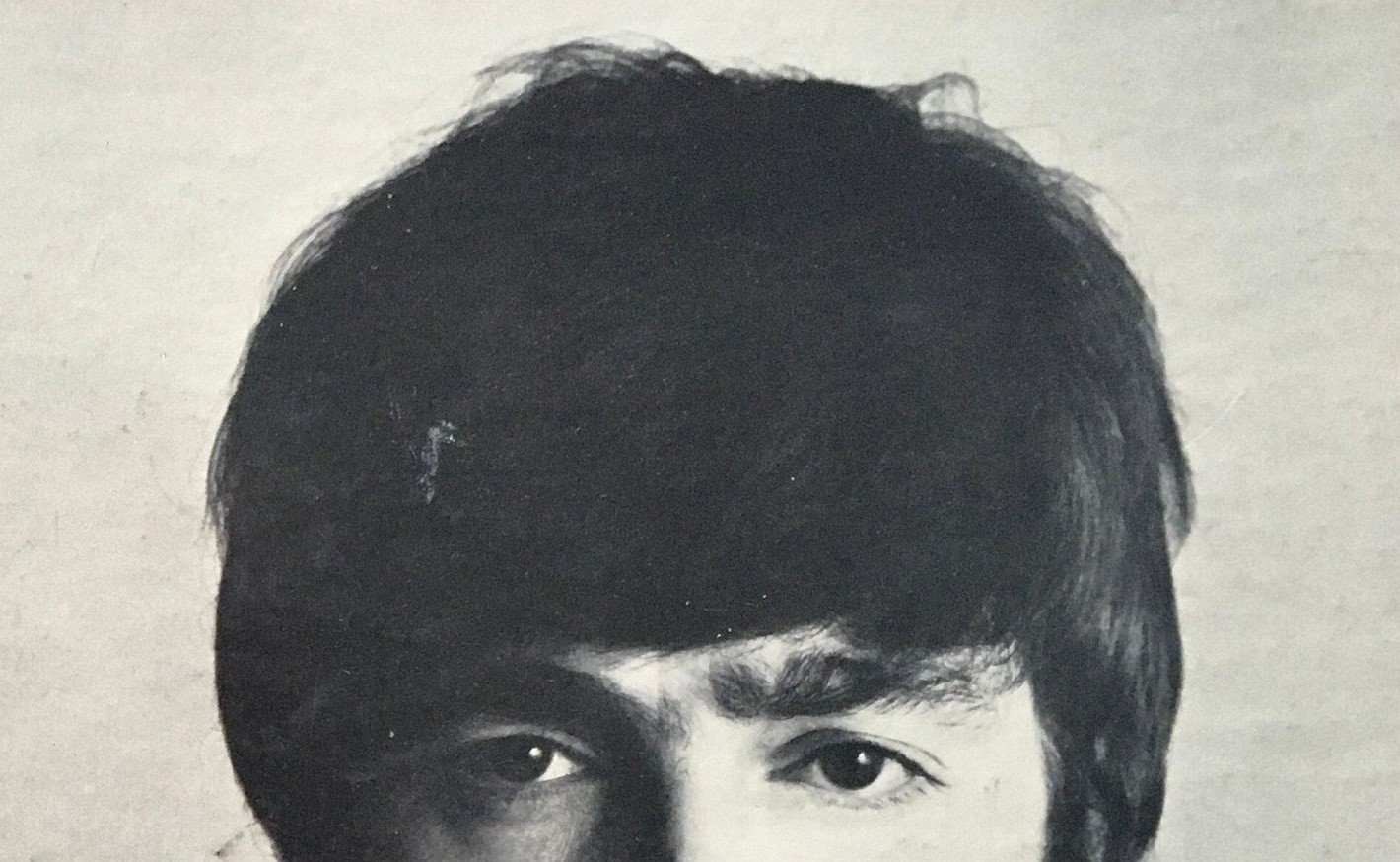 Performance-wise, John again is to the fore with his convincing vocal delivery. His rhythm work done with electric guitar during the basic track, coupled with the acoustic guitar performed in an overdub, lays quite a proficient foundation for the song. McCartney ends up hitting the nail on the head with his double-tracked vocals in the bridge and harmony work in the verses, even though it took him all nine takes to perfect. Equally difficult for Paul were his bass lines which, unusually for him, were also giving him trouble throughout most of the song's takes. Rather than saying he was having an off day, it was probably due to his unfamiliarity with the newly written song. Performance-wise, John again is to the fore with his convincing vocal delivery. His rhythm work done with electric guitar during the basic track, coupled with the acoustic guitar performed in an overdub, lays quite a proficient foundation for the song. McCartney ends up hitting the nail on the head with his double-tracked vocals in the bridge and harmony work in the verses, even though it took him all nine takes to perfect. Equally difficult for Paul were his bass lines which, unusually for him, were also giving him trouble throughout most of the song's takes. Rather than saying he was having an off day, it was probably due to his unfamiliarity with the newly written song.
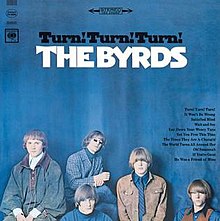 George Harrison was especially having trouble on this day for the same reason. Geoff Emerick described the guitarist in his popular 2007 book "Here, There And Everywhere" as "even more ham-fisted than usual as he gamely plowed his way through one mediocre guitar solo after another." But with focused attention at the end of the session on that day, he provided what became the impressively elegant touches to the song, namely the quickly paced triplet-based guitar solo (which was doubled by George Martin on piano) and the jangling fade-out riff. This riff, which reportedly inspired The Byrds' Rickenbacker guitar sound used throughout their career, was an alteration between major and minor used as a counterpoint to the major / minor chord pattern used in the song. George Harrison was especially having trouble on this day for the same reason. Geoff Emerick described the guitarist in his popular 2007 book "Here, There And Everywhere" as "even more ham-fisted than usual as he gamely plowed his way through one mediocre guitar solo after another." But with focused attention at the end of the session on that day, he provided what became the impressively elegant touches to the song, namely the quickly paced triplet-based guitar solo (which was doubled by George Martin on piano) and the jangling fade-out riff. This riff, which reportedly inspired The Byrds' Rickenbacker guitar sound used throughout their career, was an alteration between major and minor used as a counterpoint to the major / minor chord pattern used in the song.
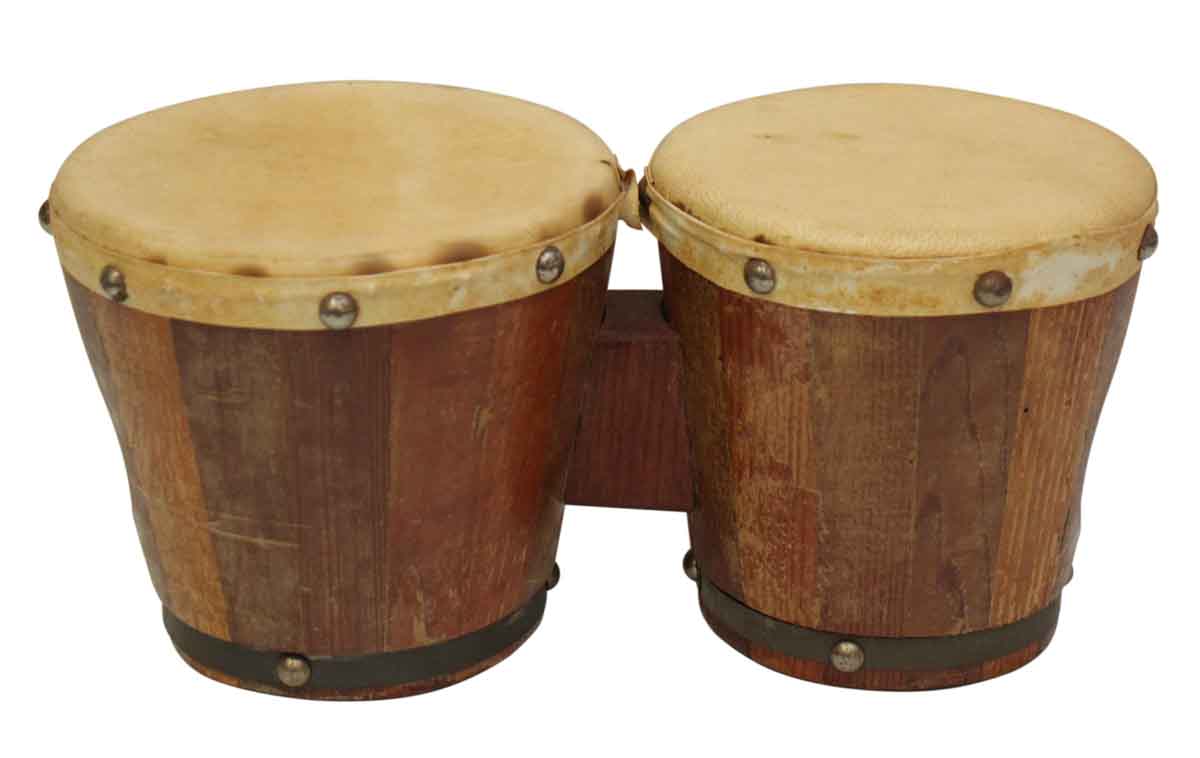 Ringo's excited performance remained constant throughout, staying locked onto the open hi-hat sizzle which helped create the "wall of sound" effect heard through the whole song. With only one track left open for overdubs, the drummer gamely plays bongos during the verses and then quickly switches to cowbell during the bridges while both John and Paul perform their overdubs at the same time. In regards to his performance, Geoff Emerick remembers, "I remember thinking that Ringo seemed especially 'on' that morning, attacking his drums with a ferocity I hadn't seen or heard before." Ringo's excited performance remained constant throughout, staying locked onto the open hi-hat sizzle which helped create the "wall of sound" effect heard through the whole song. With only one track left open for overdubs, the drummer gamely plays bongos during the verses and then quickly switches to cowbell during the bridges while both John and Paul perform their overdubs at the same time. In regards to his performance, Geoff Emerick remembers, "I remember thinking that Ringo seemed especially 'on' that morning, attacking his drums with a ferocity I hadn't seen or heard before."
 Capitol's "A Hard Day's Night" picture sleeve
|
American Releases
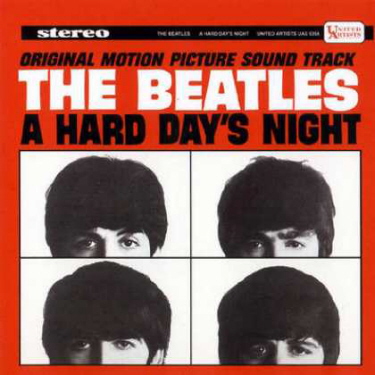 America first got to witness the song "A Hard Day's Night" on the very highly anticipated United Artists soundtrack album of the same name, which was rush-released on June 26th, 1964, well ahead of the intended general release of the film in the US on August 12th. Since United Artists was anxious to get this album released as soon as possible, they used the mono mixes they received from EMI around June 10th, 1964 to create "High Fidelity Stereo" mixes for the stereo pressings of the album. The stereo mix of the title song was made by transferring the mono master to two seperate channels and boosting the bass frequencies in the left channel and raising the treble frequencies in the right channel. America first got to witness the song "A Hard Day's Night" on the very highly anticipated United Artists soundtrack album of the same name, which was rush-released on June 26th, 1964, well ahead of the intended general release of the film in the US on August 12th. Since United Artists was anxious to get this album released as soon as possible, they used the mono mixes they received from EMI around June 10th, 1964 to create "High Fidelity Stereo" mixes for the stereo pressings of the album. The stereo mix of the title song was made by transferring the mono master to two seperate channels and boosting the bass frequencies in the left channel and raising the treble frequencies in the right channel.
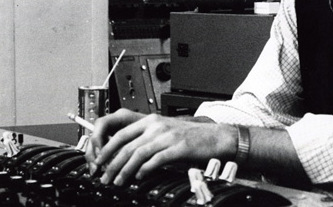 They also created a panning effect by increasing the volume in the left channel and lowering the volume in the right channel during both bridges, making it seem like McCartney's lead vocals were being heard more from the left, the opposite being done during the instrumental section to make it appear that the guitar/piano solo was coming from the right channel. The fading guitar passage at the song's conclusion is also panned to the right. Very creative fakery indeed! They also created a panning effect by increasing the volume in the left channel and lowering the volume in the right channel during both bridges, making it seem like McCartney's lead vocals were being heard more from the left, the opposite being done during the instrumental section to make it appear that the guitar/piano solo was coming from the right channel. The fading guitar passage at the song's conclusion is also panned to the right. Very creative fakery indeed!
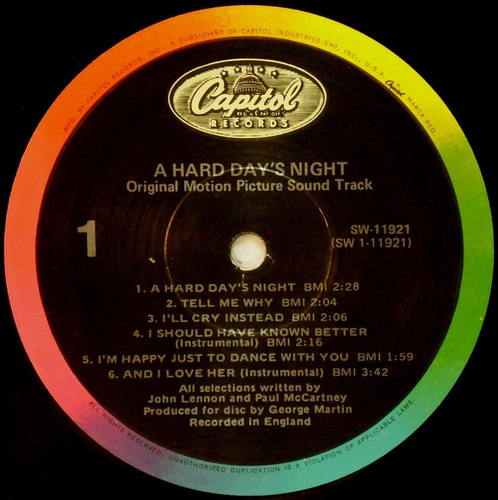 United Artists kept this LP in print until the label was bought by Capitol Records in 1978, Capitol beginning their reprints of this soundtrack album on August 1st, 1980. The album got its CD release on January 21st, 2014, both the mono and true stereo versions of this original US soundtrack album being fit onto a single compact disc. United Artists kept this LP in print until the label was bought by Capitol Records in 1978, Capitol beginning their reprints of this soundtrack album on August 1st, 1980. The album got its CD release on January 21st, 2014, both the mono and true stereo versions of this original US soundtrack album being fit onto a single compact disc.
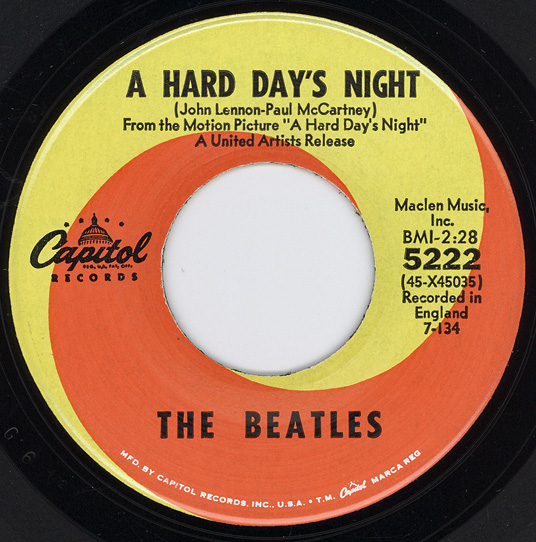 Capitol followed quickly after by releasing the song as their third blockbuster single on July 13th, pairing it with another song from the soundtrack, "I Should Have Known Better" as the b-side. This US release differed from the British release, which featured the non-soundtrack song "Things We Said Today" as the b-side. The reason for this was that Capitol, who was in competition with United Artists for record sales, wanted this Beatles' film to be promoted as much as possible in order to generate more sales for them. Therefore, Capitol Records could advertise the film, including a plug for United Artists, on the label of both sides of the single Capitol followed quickly after by releasing the song as their third blockbuster single on July 13th, pairing it with another song from the soundtrack, "I Should Have Known Better" as the b-side. This US release differed from the British release, which featured the non-soundtrack song "Things We Said Today" as the b-side. The reason for this was that Capitol, who was in competition with United Artists for record sales, wanted this Beatles' film to be promoted as much as possible in order to generate more sales for them. Therefore, Capitol Records could advertise the film, including a plug for United Artists, on the label of both sides of the single
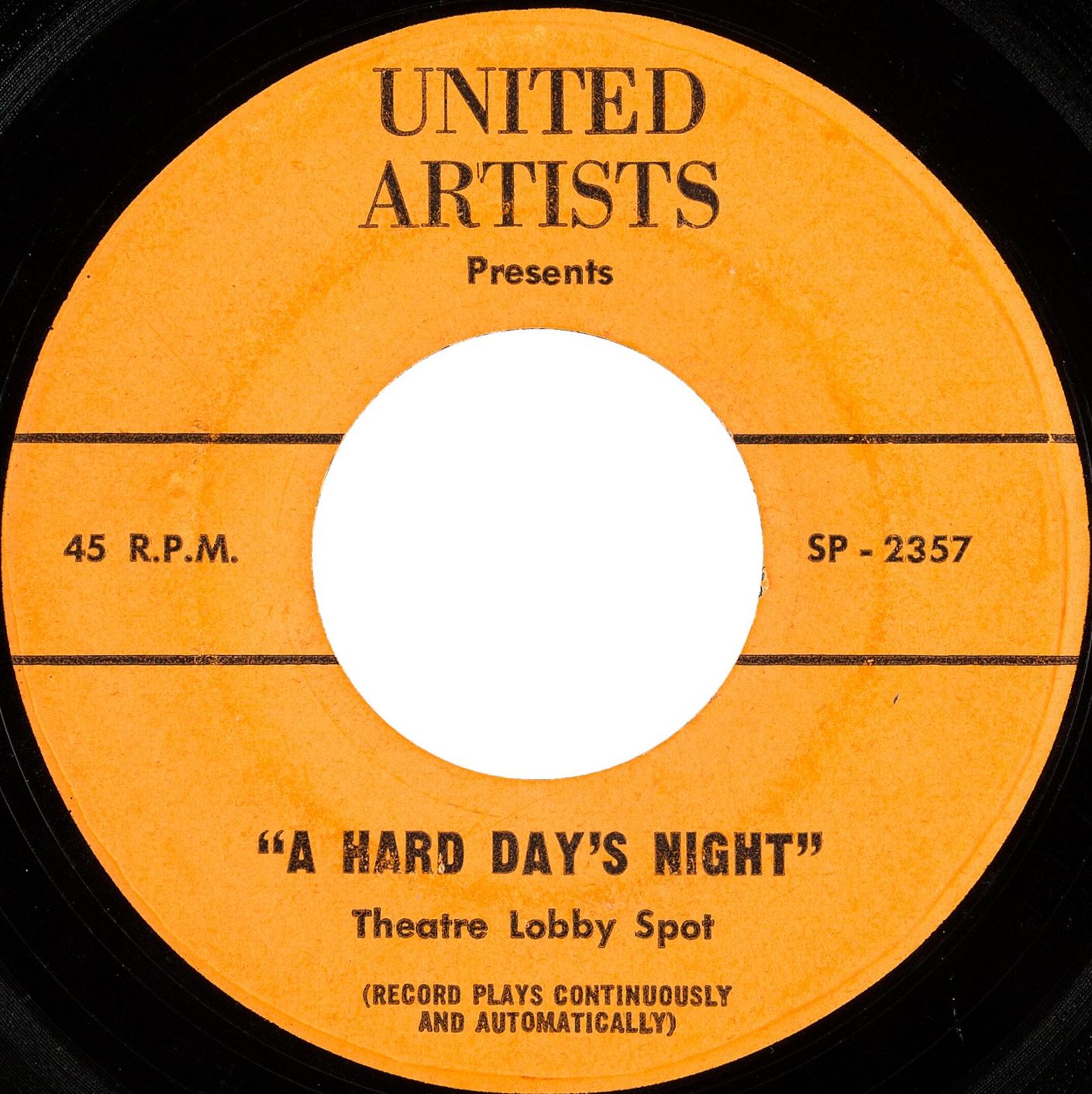 Sometime in July, 1964, United Artists released a one-sided single entitled "A Hard Day's Night - Theatre Lobby Spot" which was made only to be distributed to US movie theaters to be played in their lobbies in promotion of the August 12th premier of the film. "Listen to the big news about The Beatles" begins the track, followed by news reports and rave reviews of the movie after its British premier on July 7th, 1964. The song "A Hard Day's Night" is also included on this disc, as well as encouragement to purchase advance tickets for its US premier. The opposite side of the disc consists of a raised textured pattern to discourage anyone from playing the wrong side. The label on the a-side contains the words "(record plays continusously and automatically)," this obviously only occuring when using an automatic turntable. Sometime in July, 1964, United Artists released a one-sided single entitled "A Hard Day's Night - Theatre Lobby Spot" which was made only to be distributed to US movie theaters to be played in their lobbies in promotion of the August 12th premier of the film. "Listen to the big news about The Beatles" begins the track, followed by news reports and rave reviews of the movie after its British premier on July 7th, 1964. The song "A Hard Day's Night" is also included on this disc, as well as encouragement to purchase advance tickets for its US premier. The opposite side of the disc consists of a raised textured pattern to discourage anyone from playing the wrong side. The label on the a-side contains the words "(record plays continusously and automatically)," this obviously only occuring when using an automatic turntable.
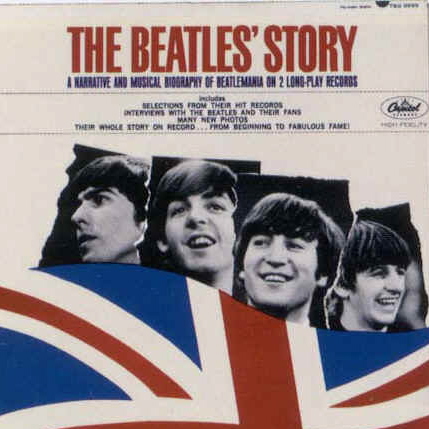 A partial release of the song appeared on November 23rd, 1964 on the double-album "The Beatles' Story." Since Capitol didn't get permission to release "The Beatles Live At The Hollywood Bowl" album, which they intended to be made available for the Christmas season, the label settled for this hastily put together documentary double album which included snippets of Beatles music. The track "A Hard Day's Night - Their First Movie" started off with the first verse of the song. Surprisingly, "The Beatles' Story" was also released on compact disc on January 21st., 2014, but only as contained in the 13 album box set "The US Albums." A partial release of the song appeared on November 23rd, 1964 on the double-album "The Beatles' Story." Since Capitol didn't get permission to release "The Beatles Live At The Hollywood Bowl" album, which they intended to be made available for the Christmas season, the label settled for this hastily put together documentary double album which included snippets of Beatles music. The track "A Hard Day's Night - Their First Movie" started off with the first verse of the song. Surprisingly, "The Beatles' Story" was also released on compact disc on January 21st., 2014, but only as contained in the 13 album box set "The US Albums."
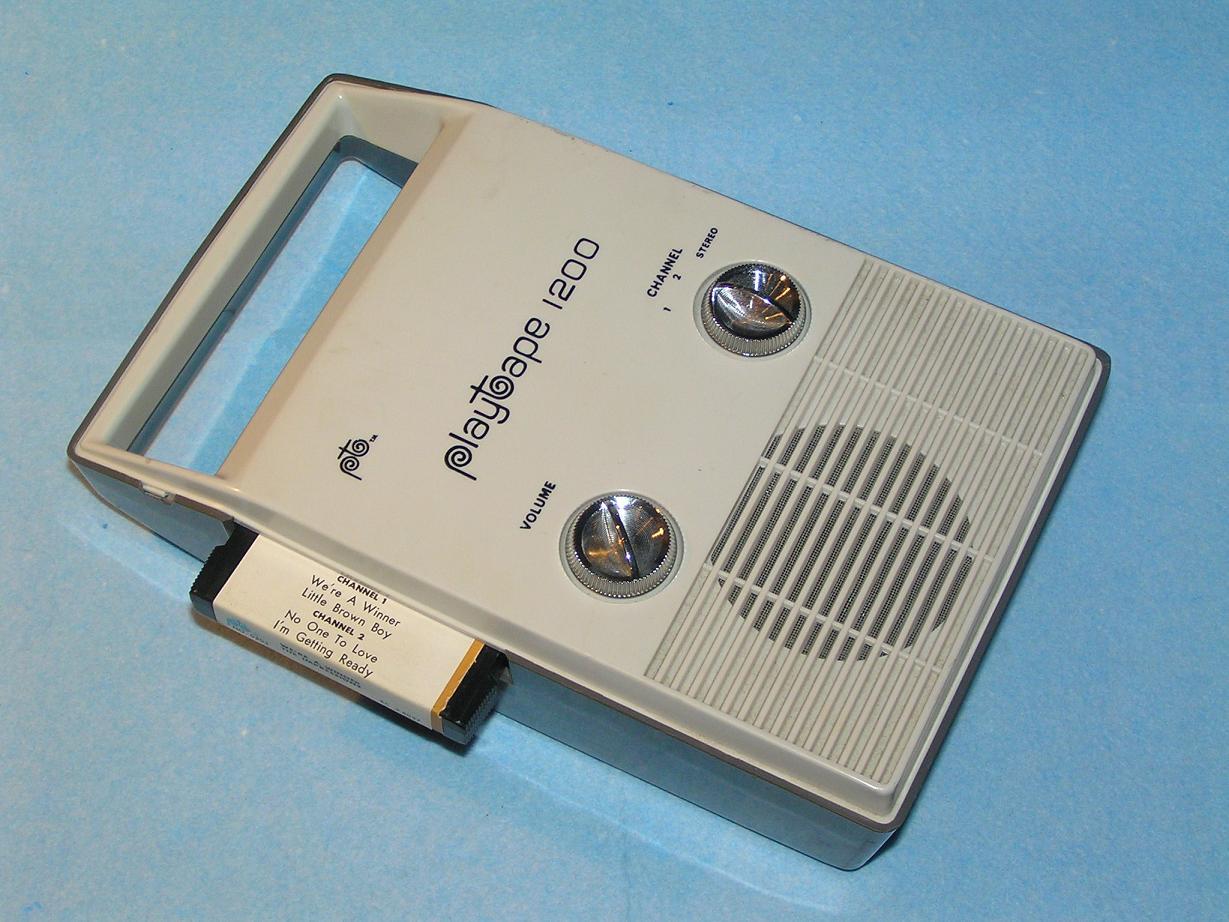 Sometime in 1967, United Artists Records released a unique version of the soundtrack album for "A Hard Day's Night" on a brand new but short-lived format called "Playtapes." These tape cartridges did not have the capability to include entire albums, so an eight-song version of the album came out in this portable format, the title track being one of these songs. These "Playtapes" are highly collectable today. Sometime in 1967, United Artists Records released a unique version of the soundtrack album for "A Hard Day's Night" on a brand new but short-lived format called "Playtapes." These tape cartridges did not have the capability to include entire albums, so an eight-song version of the album came out in this portable format, the title track being one of these songs. These "Playtapes" are highly collectable today.
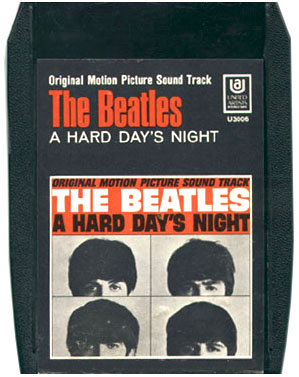 Sometime in 1970, United Artists released their 8-track version of the "A Hard Day's Night" soundtrack album. It is of special note here because, on this version of the title song, the record company artificially extended it in order to decrease the amount of blank space that otherwise would have occurred at the conclusion of track one of the released tape. This extended version includes John repeating the line "you know, I feel alright" three additional times. Sometime in 1970, United Artists released their 8-track version of the "A Hard Day's Night" soundtrack album. It is of special note here because, on this version of the title song, the record company artificially extended it in order to decrease the amount of blank space that otherwise would have occurred at the conclusion of track one of the released tape. This extended version includes John repeating the line "you know, I feel alright" three additional times.
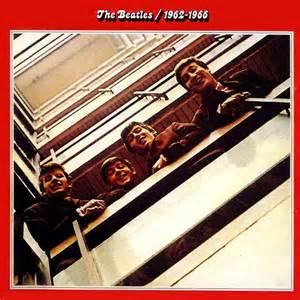 The next appearance was on the first of many "greatest hits" packages to come. "The Beatles/1962-1966" (aka "The Red Album") appeared in America on April 3rd, 1973. The mix used on this release was the mono mix that was used for the single even though two stereo mixes had been in existence since 1964. The British release of this double album contained the stereo mix made on June 22nd, 1964, but since Capitol only had in its possession the mono mix that they used for the single, they hastily put this on the album. With the release of this compilation album on compact disc in 1993 and its remastered re-release on October 19th, 2010, the stereo mix has been substituted. The next appearance was on the first of many "greatest hits" packages to come. "The Beatles/1962-1966" (aka "The Red Album") appeared in America on April 3rd, 1973. The mix used on this release was the mono mix that was used for the single even though two stereo mixes had been in existence since 1964. The British release of this double album contained the stereo mix made on June 22nd, 1964, but since Capitol only had in its possession the mono mix that they used for the single, they hastily put this on the album. With the release of this compilation album on compact disc in 1993 and its remastered re-release on October 19th, 2010, the stereo mix has been substituted.
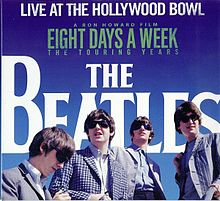 May 4th, 1977 saw a live version of the song released on the long-awaited album "The Beatles At The Hollywood Bowl." This live album comprised a combination of tracks recorded during both of their 1964 and 1965 visits to the Hollywood Bowl, "A Hard Day's Night" being recorded on August 30th, 1965. This album was eventually remastered by Giles Martin and re-released yet again as "Live At The Hollywood Bowl" on September 9th, 2016. May 4th, 1977 saw a live version of the song released on the long-awaited album "The Beatles At The Hollywood Bowl." This live album comprised a combination of tracks recorded during both of their 1964 and 1965 visits to the Hollywood Bowl, "A Hard Day's Night" being recorded on August 30th, 1965. This album was eventually remastered by Giles Martin and re-released yet again as "Live At The Hollywood Bowl" on September 9th, 2016.
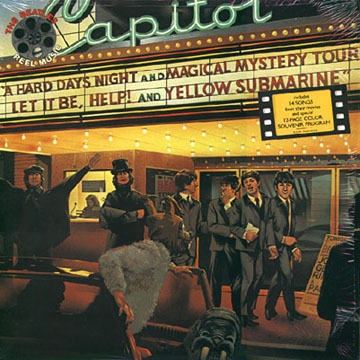 On March 22nd, 1982, Capitol released a compilation album entitled "Reel Music," which featured songs from all of The Beatles' movies. This album coincided with the theatrical re-release of the movie "A Hard Day's Night," which was visually enhanced and thereby included Dolby sound. The album was quite successful, peaking at #19 on the Billboard album chart and certified gold by selling over 500,000 units. Over 12,000 promotional copies were also printed, these being on translucent gold vinyl. This album contained the first stereo version of the song "A Hard Day's Night" heard in America. On March 22nd, 1982, Capitol released a compilation album entitled "Reel Music," which featured songs from all of The Beatles' movies. This album coincided with the theatrical re-release of the movie "A Hard Day's Night," which was visually enhanced and thereby included Dolby sound. The album was quite successful, peaking at #19 on the Billboard album chart and certified gold by selling over 500,000 units. Over 12,000 promotional copies were also printed, these being on translucent gold vinyl. This album contained the first stereo version of the song "A Hard Day's Night" heard in America.
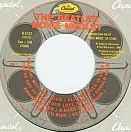 Also released on March 22nd, 1982 was the single "The Beatles Movie Medley," which was a fun combination of snippets of seven Beatles songs that were featured in their movies. The immense popularity of the single "Stars On 45 Medley," which featured many Beatles songs sung by soundalikes and became a US #1 hit, spurred Capitol to put together this single as well, which peaked at #12 on the Billboard Hot 100. A bit of the song "A Hard Day's Night" is heard as the fifth of seven songs in the medley. Also released on March 22nd, 1982 was the single "The Beatles Movie Medley," which was a fun combination of snippets of seven Beatles songs that were featured in their movies. The immense popularity of the single "Stars On 45 Medley," which featured many Beatles songs sung by soundalikes and became a US #1 hit, spurred Capitol to put together this single as well, which peaked at #12 on the Billboard Hot 100. A bit of the song "A Hard Day's Night" is heard as the fifth of seven songs in the medley.
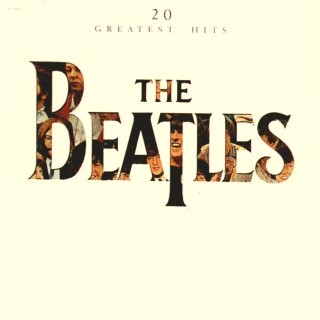 This song was then featured on the Capitol album "20 Greatest Hits," which came out on October 11th, 1982. This now out-of-print album, which only peaked at #50 on the Billboard album chart, may have been one compilation album too many for US consumers. This song was then featured on the Capitol album "20 Greatest Hits," which came out on October 11th, 1982. This now out-of-print album, which only peaked at #50 on the Billboard album chart, may have been one compilation album too many for US consumers.
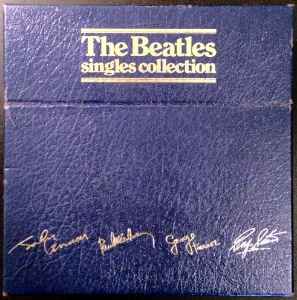 The first time "A Hard Day's Night" was paired with "Things We Said Today" on a single in the US as it was in Britain was on December 6th, 1982 as featured in the vinyl box set "The Beatles Singles Collection." Quite interestingly, "The Beatles Movie Medley" single that was detailed above was also included in this box set since it was a newly released official Beatles release at the time. When this box set was later released as "The Beatles CD Singles Collection" on November 11th, 1992 and as a reissued vinyl collection titled "The Singles Collection" on November 22nd, 2019, the "A Hard Day's Night" single was included but "The Beatles Movie Medley" was not. The first time "A Hard Day's Night" was paired with "Things We Said Today" on a single in the US as it was in Britain was on December 6th, 1982 as featured in the vinyl box set "The Beatles Singles Collection." Quite interestingly, "The Beatles Movie Medley" single that was detailed above was also included in this box set since it was a newly released official Beatles release at the time. When this box set was later released as "The Beatles CD Singles Collection" on November 11th, 1992 and as a reissued vinyl collection titled "The Singles Collection" on November 22nd, 2019, the "A Hard Day's Night" single was included but "The Beatles Movie Medley" was not.
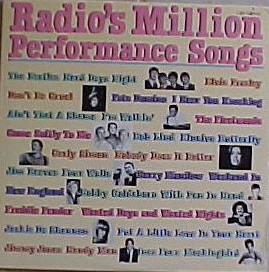 Sometime in 1984, CBS Songs released the album "Radio's Million Performance Songs," which featured fifteen diverse recording artists, including The Beatles, Elvis Presley, Carly Simon and Barry Manilow. This album featured the song "A Hard Day's Night." Sometime in 1984, CBS Songs released the album "Radio's Million Performance Songs," which featured fifteen diverse recording artists, including The Beatles, Elvis Presley, Carly Simon and Barry Manilow. This album featured the song "A Hard Day's Night."
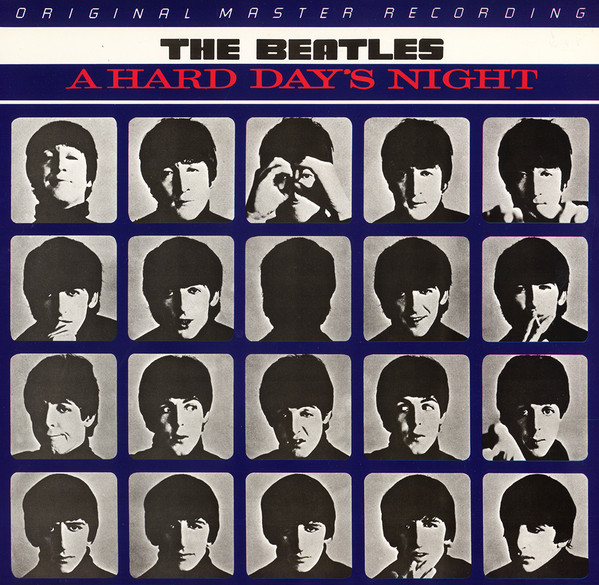 The first time that the original British "A Hard Day's Night" album was made available in the US was the "Original Master Recording" vinyl edition released through Mobile Fidelity Sound Lab in February of 1987. This album was prepared utilizing half-speed mastering technology from the original master tape on loan from EMI. This version of the album was only available for a short time and is quite collectible today. The first time that the original British "A Hard Day's Night" album was made available in the US was the "Original Master Recording" vinyl edition released through Mobile Fidelity Sound Lab in February of 1987. This album was prepared utilizing half-speed mastering technology from the original master tape on loan from EMI. This version of the album was only available for a short time and is quite collectible today.
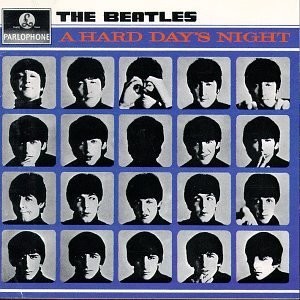 On February 26nd, 1987, the initial batch of four Beatles albums on CD was released, including the original British mono version of "A Hard Day's Night." This album was released on vinyl in the US on July 21st, 1987. The stereo remastered version of this album was released on CD on September 9th, 2009 and then later on vinyl on November 13th, 2012. On February 26nd, 1987, the initial batch of four Beatles albums on CD was released, including the original British mono version of "A Hard Day's Night." This album was released on vinyl in the US on July 21st, 1987. The stereo remastered version of this album was released on CD on September 9th, 2009 and then later on vinyl on November 13th, 2012.
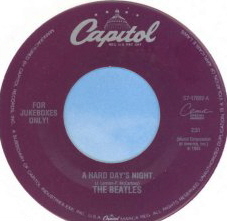 "A Hard Day's Night" was paired up again with the original UK b-side "Things We Said Today" when Capitol released it as a jukebox single in November of 1994. This rare mono single, under the Cema series with the words "For Jukeboxes Only" on the label, was printed on white vinyl. "A Hard Day's Night" was paired up again with the original UK b-side "Things We Said Today" when Capitol released it as a jukebox single in November of 1994. This rare mono single, under the Cema series with the words "For Jukeboxes Only" on the label, was printed on white vinyl.
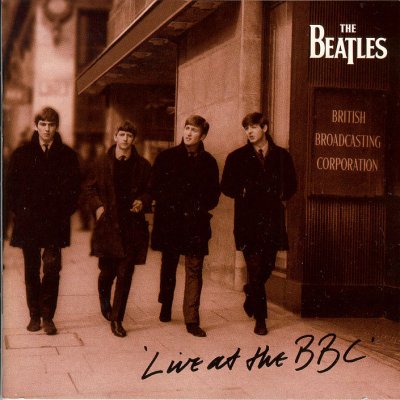 "Live At The BBC" was then released by Apple Records on December 6th, 1994, which included the version the group recorded back on July 14th, 1964 for the BBC program "Top Gear," which aired on July 16th of that year as mentioned above. On November 11th, 2013, this album was remastered, re-packaged and re-released. "Live At The BBC" was then released by Apple Records on December 6th, 1994, which included the version the group recorded back on July 14th, 1964 for the BBC program "Top Gear," which aired on July 16th of that year as mentioned above. On November 11th, 2013, this album was remastered, re-packaged and re-released.
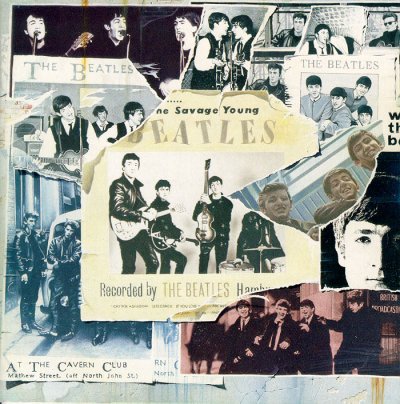 On November 21st, 1995, the highly anticipated "Anthology 1" album was released, which featured "take one" of "A Hard Day's Night." With this first run-through of the song, we hear a slightly slower rendition played by four musicians that are all unsure of themselves. It's an interesting listen, recognizing that, within three hours, The Beatles came up with the confident, Grammy winning performance that we are all so familiar with. On November 21st, 1995, the highly anticipated "Anthology 1" album was released, which featured "take one" of "A Hard Day's Night." With this first run-through of the song, we hear a slightly slower rendition played by four musicians that are all unsure of themselves. It's an interesting listen, recognizing that, within three hours, The Beatles came up with the confident, Grammy winning performance that we are all so familiar with.
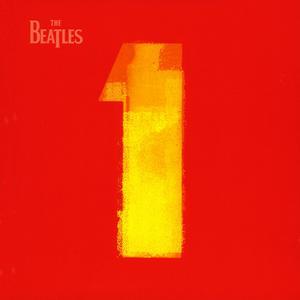 November 14th, 2000, saw the release of the immensely popular compilation album "Beatles 1," which obviously included "A Hard Day's Night." The album sold 31 million copies worldwide as of 2017. Everybody seemed to want a copy. A remastered version of this album was released in September of 2011 and a newly mixed version was released on November 6th, 2015. November 14th, 2000, saw the release of the immensely popular compilation album "Beatles 1," which obviously included "A Hard Day's Night." The album sold 31 million copies worldwide as of 2017. Everybody seemed to want a copy. A remastered version of this album was released in September of 2011 and a newly mixed version was released on November 6th, 2015.
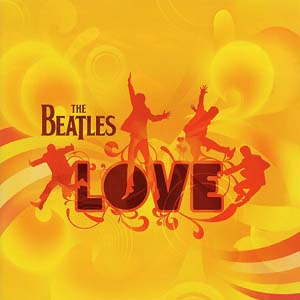
Not to be forgotten is the song's very brief inclusion on the November 21st, 2006 released compilation LP called "Love," which was a Grammy Award-winning soundtrack that was co-produced by George Martin and his son Giles Martin. The Beatles' music was specificlly mixed for the Cirque du Soleil production of the same name, so that snippets of Beatles songs were interlaced to create an interesting time capsule of the '60s. At the very beginning of the track "Get Back," you hear the ever-popular opening chord of "A Hard Day's Night," which is then heard played backward as the drum solo of the Abbey Road song "The End" is heard in the forefront.
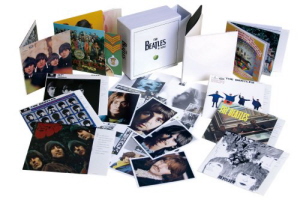 The original mono mix of the song has been remastered and is available in the box set “The Beatles In Mono,” which was released on CD on September 9th, 2009 and on vinyl on September 9th, 2014. This crystal clear version is the closest to what the original 1964 EMI engineering staff intended the public to hear. The original mono mix of the song has been remastered and is available in the box set “The Beatles In Mono,” which was released on CD on September 9th, 2009 and on vinyl on September 9th, 2014. This crystal clear version is the closest to what the original 1964 EMI engineering staff intended the public to hear.
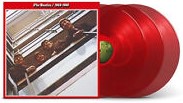 A new 50th Anniversay edition of the compilation set "The Beatles / 1962 - 1966" (aka "The Red Album") was released on November 10th, 2023, the new stereo mix of "A Hard Day's Night," as detailed above, being included. This set included 12 additional songs for an expanded total of 38 tracks, and was made available as a double CD and as a triple vinyl release on both black and red vinyl. A new 50th Anniversay edition of the compilation set "The Beatles / 1962 - 1966" (aka "The Red Album") was released on November 10th, 2023, the new stereo mix of "A Hard Day's Night," as detailed above, being included. This set included 12 additional songs for an expanded total of 38 tracks, and was made available as a double CD and as a triple vinyl release on both black and red vinyl.
Live Performances
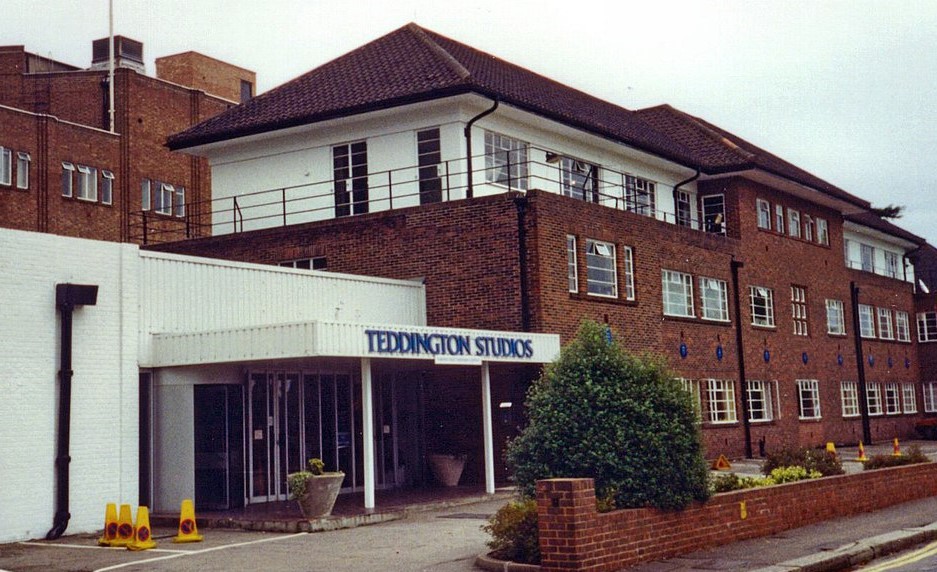 After it was quickly determined that the song "A Hard Day's Night" would be the perfect candidate for their next single, they did not delay in promoting it. Their first known performance of the song was on a live appearance on the British television program "Lucky Stars (Summer Spin)" on July 11th, 1964 in which they mimed their way through this and three other songs at ABC's Teddington Studio Centre. This was done one day after the song's official British release as a single and album on July 10th. After it was quickly determined that the song "A Hard Day's Night" would be the perfect candidate for their next single, they did not delay in promoting it. Their first known performance of the song was on a live appearance on the British television program "Lucky Stars (Summer Spin)" on July 11th, 1964 in which they mimed their way through this and three other songs at ABC's Teddington Studio Centre. This was done one day after the song's official British release as a single and album on July 10th.
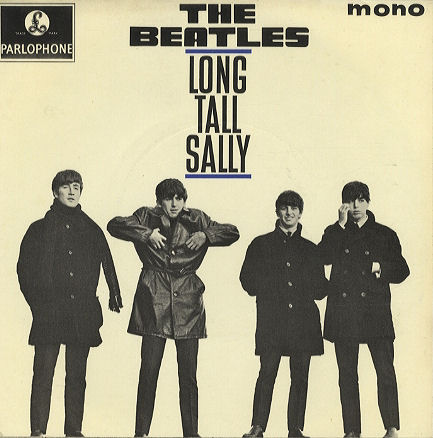 After a live performance of the song on July 19th on the television variety show "Blackpool Night Out," they added it to their set list for their 1964 world tour already in progress. The American leg of the tour featured it usually fixed as the next-to-last song, just before their closer "Long Tall Sally." Therefore, the historic "Hollywood Bowl" performance in Los Angeles on August 23rd featured the song, as did the rest of the world tour, which finally ended on November 10th, 1964. After a live performance of the song on July 19th on the television variety show "Blackpool Night Out," they added it to their set list for their 1964 world tour already in progress. The American leg of the tour featured it usually fixed as the next-to-last song, just before their closer "Long Tall Sally." Therefore, the historic "Hollywood Bowl" performance in Los Angeles on August 23rd featured the song, as did the rest of the world tour, which finally ended on November 10th, 1964.
 With the song "A Hard Day's Night" embedded in the minds of all their fans, especially due to the extraordinarily successful run of their first feature film, The Beatles continued to perform it well into 1965. Their "Another Beatles Christmas Show" in London, which stretched from December 24th, 1964 through January 16th, 1965, featured the song, as did most of their 1965 World Tour, which began at the Palais des Sports in Paris on June 20th of that year. With the song "A Hard Day's Night" embedded in the minds of all their fans, especially due to the extraordinarily successful run of their first feature film, The Beatles continued to perform it well into 1965. Their "Another Beatles Christmas Show" in London, which stretched from December 24th, 1964 through January 16th, 1965, featured the song, as did most of their 1965 World Tour, which began at the Palais des Sports in Paris on June 20th of that year.
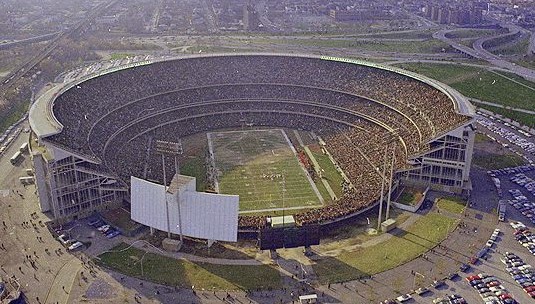 During the North American portion of the tour, the band performed the song at their famous Shea Stadium concert on August 15th, 1965. This world record concert audience of 55,600 fans was not the only group of people to see them perform it, as the whole performance was filmed by Sullivan Productions (this being Ed Sullivan's company) for television broadcast. Although it aired on March 1st and August 27th, 1966 in Britain, it didn't get broadcast on American television until January 10th, 1967. During the North American portion of the tour, the band performed the song at their famous Shea Stadium concert on August 15th, 1965. This world record concert audience of 55,600 fans was not the only group of people to see them perform it, as the whole performance was filmed by Sullivan Productions (this being Ed Sullivan's company) for television broadcast. Although it aired on March 1st and August 27th, 1966 in Britain, it didn't get broadcast on American television until January 10th, 1967.
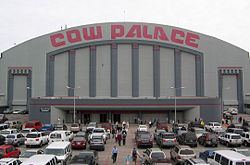 This tour also included two more appearances at the Hollywood Bowl on August 29th and 30th, the 2nd performance of "A Hard Day's Night" being recorded and preserved on their album "The Beatles At The Hollywood Bowl" as released in 1977. The next day's performance of the song at the famous Cow Palace in San Francisco, which incidentally ended the 1965 tour, appears to be the last time The Beatles ever performed the song. This tour also included two more appearances at the Hollywood Bowl on August 29th and 30th, the 2nd performance of "A Hard Day's Night" being recorded and preserved on their album "The Beatles At The Hollywood Bowl" as released in 1977. The next day's performance of the song at the famous Cow Palace in San Francisco, which incidentally ended the 1965 tour, appears to be the last time The Beatles ever performed the song.
 Surprisingly, Sir Paul decided to incorporate "A Hard Day's Night" into his live concert repertoire, this song being the opening number on his "One On One" tour, which started on April 13th, 2016 at the Save Mart Center in Fresno, California and ended on December 16th, 2017 at Aukland, New Zealand. He continued to open with this song during his "Freshen Up" tour, which started on September 17th, 2018 in Quebec City, Canada and later concluded on July 13th, 2019 in Los Angeles, California. Surprisingly, Sir Paul decided to incorporate "A Hard Day's Night" into his live concert repertoire, this song being the opening number on his "One On One" tour, which started on April 13th, 2016 at the Save Mart Center in Fresno, California and ended on December 16th, 2017 at Aukland, New Zealand. He continued to open with this song during his "Freshen Up" tour, which started on September 17th, 2018 in Quebec City, Canada and later concluded on July 13th, 2019 in Los Angeles, California.
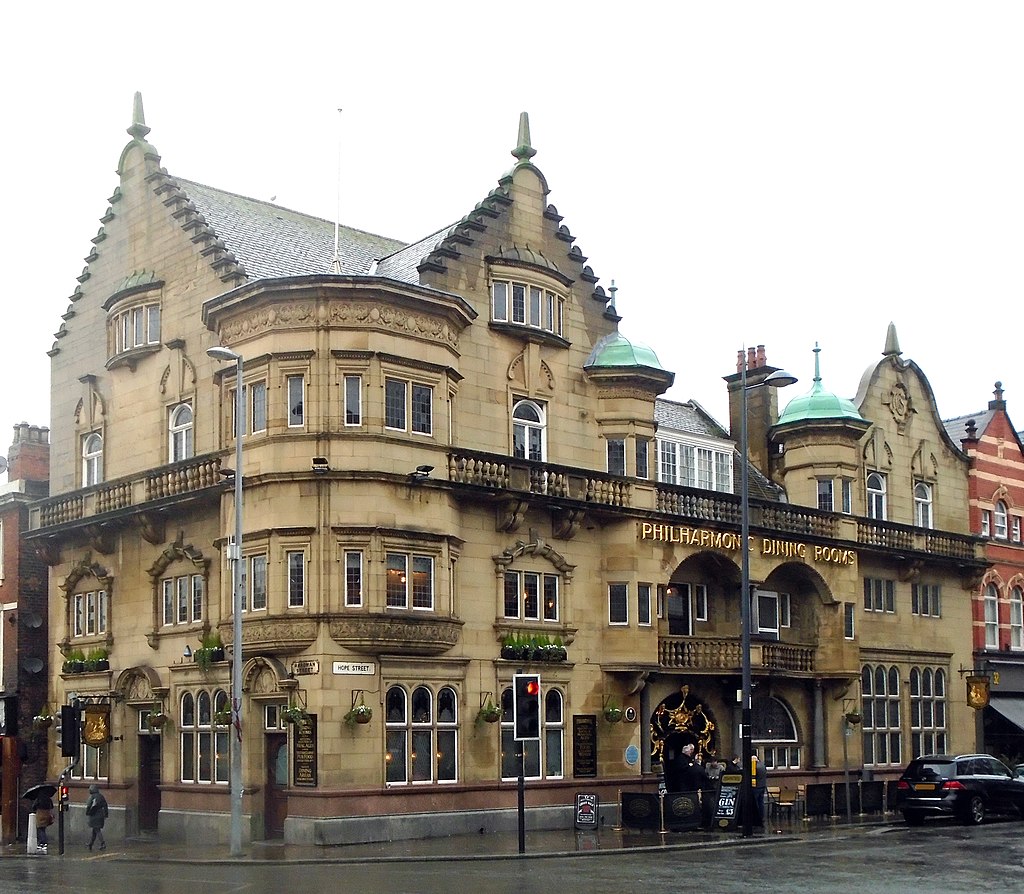 Then, on June 9th, 2018, McCartney played a secret show at the Philharmonic Pub in Liverpool for a filmed segment on "The Late Late Show With James Corden." The segment began with Paul and his band playing "A Hard Day's Night," a truncated version of this performance being broadcast on the CBS show on June 21st, 2018, and then as a prime-time special entitled "When Corden Met McCartney, Live From Liverpool," which was shown on August 20th of that year. Then, on June 9th, 2018, McCartney played a secret show at the Philharmonic Pub in Liverpool for a filmed segment on "The Late Late Show With James Corden." The segment began with Paul and his band playing "A Hard Day's Night," a truncated version of this performance being broadcast on the CBS show on June 21st, 2018, and then as a prime-time special entitled "When Corden Met McCartney, Live From Liverpool," which was shown on August 20th of that year.
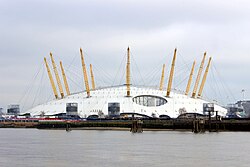 Paul decided to open many of his shows with "A Hard Day's Night" during the 2023/2024 leg of his "Got Back" tour, which ran from October 18th, 2023 in Adelaide, Australia until December 19th, 2024 at The 02 Arena in London. Paul decided to open many of his shows with "A Hard Day's Night" during the 2023/2024 leg of his "Got Back" tour, which ran from October 18th, 2023 in Adelaide, Australia until December 19th, 2024 at The 02 Arena in London.
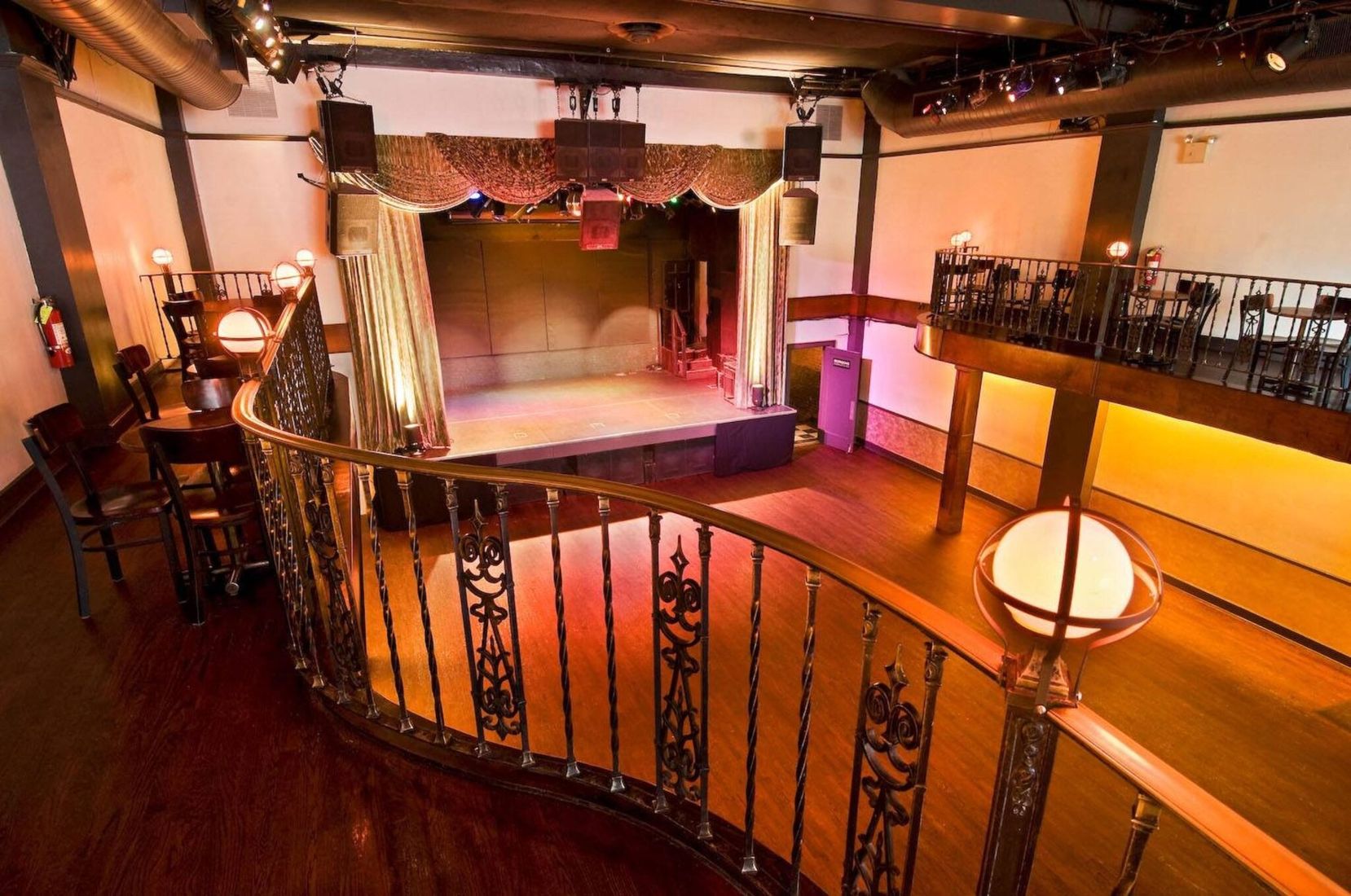 Interestingly, Paul and his band played a surprise three night residency at the Bowery Ballroom in New York City on February 11th, 12th and 14th, 2025, this final night being Valentine's Day. The group opened each show with "A Hard Day's Night" at this 575-capacity Manhattan venue. Interestingly, Paul and his band played a surprise three night residency at the Bowery Ballroom in New York City on February 11th, 12th and 14th, 2025, this final night being Valentine's Day. The group opened each show with "A Hard Day's Night" at this 575-capacity Manhattan venue.
Conclusion
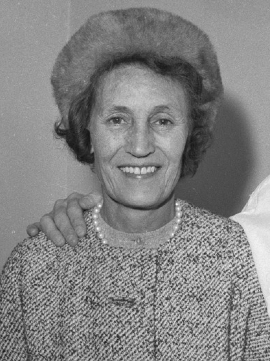 While on the set filming their second motion picture "Help!" on April 28, 1965, comedian and good friend Peter Sellers arrived at Twickenham studios to present The Beatles with the Grammy Award that they won for the song "A Hard Day's Night." The award was won in the category of "Best Performance by a Vocal Group" of 1964. The humorous segment was filmed and shown in America on the Grammy Awards program "The Best On Record" on May 18, 1965. The song won another sort of award in the eyes of his beloved Aunt Mimi. When asked during an interview in the UK shortly after his death what her favorite John Lennon song was, she exclaimed, "Well, I don't know...I think "A Hard Day's Night" at the present time." While on the set filming their second motion picture "Help!" on April 28, 1965, comedian and good friend Peter Sellers arrived at Twickenham studios to present The Beatles with the Grammy Award that they won for the song "A Hard Day's Night." The award was won in the category of "Best Performance by a Vocal Group" of 1964. The humorous segment was filmed and shown in America on the Grammy Awards program "The Best On Record" on May 18, 1965. The song won another sort of award in the eyes of his beloved Aunt Mimi. When asked during an interview in the UK shortly after his death what her favorite John Lennon song was, she exclaimed, "Well, I don't know...I think "A Hard Day's Night" at the present time."
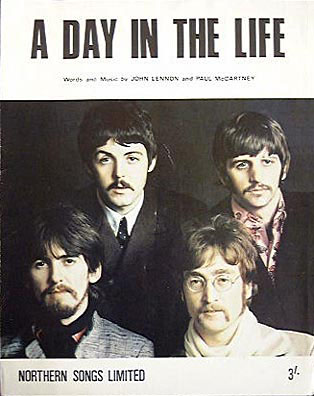 Some reviewers have identified the chilling opening chord of "A Hard Day's Night" as the official beginning of the middle period of The Beatles career, which appropriately came to a close with the equally chilling final chord of "A Day In The Life." It has been suggested that this segment of their career was the most creative and influential period of popular music history. With the strident first chord of "A Hard Day's Night," the music world had entered into a wonderful new era. Some reviewers have identified the chilling opening chord of "A Hard Day's Night" as the official beginning of the middle period of The Beatles career, which appropriately came to a close with the equally chilling final chord of "A Day In The Life." It has been suggested that this segment of their career was the most creative and influential period of popular music history. With the strident first chord of "A Hard Day's Night," the music world had entered into a wonderful new era.
Song Summary
"A Hard Day's Night"
Written by: John Lennon / Paul McCartney
-
Song Written: April 13th and 14th, 1964
-
Song Recorded: April 16, 1964
-
First US Release Date: June 26, 1964
-
-
US Single Release: Capitol #5222
-
Highest Chart Position: #1 (2 weeks)
-
-
Length: 2:32
-
Key: G major
-
Producer: George Martin
-
Engineers: Norman Smith, Geoff Emerick
Instrumentation (most likely):
-
John Lennon - Lead Vocals, Rhythm Guitars (1964 Rickenbacker 325 / Gibson J160E)
-
Paul McCartney - Lead and Harmony Vocals, Bass Guitar (1963 Hofner 500/1)
-
George Harrison - Lead Guitar (1963 Rickenbacker 360-12 Fireglo)
-
Ringo Starr - Drums (1963 Ludwig Downbeat Black Oyster Pearl), Bongos, Cowbell
-
George Martin - Piano (1905 Steinway Vertegrand upright)
Written and compiled by Dave Rybaczewski
|
IF YOU WOULD LIKE TO MAKE A DONATION TO KEEP THIS WEBSITE UP AND RUNNING, PLEASE CLICK BELOW!
|